Photoshoot:

Selection:
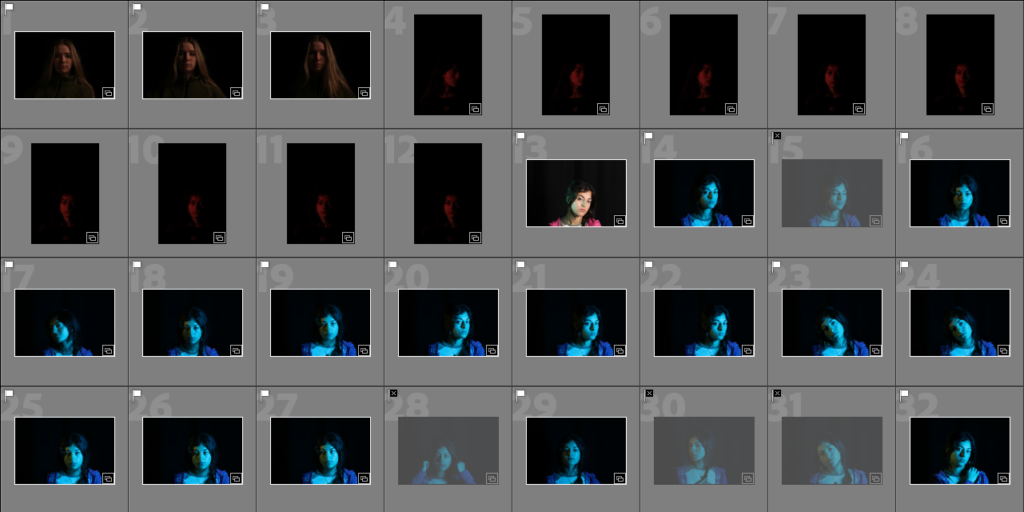

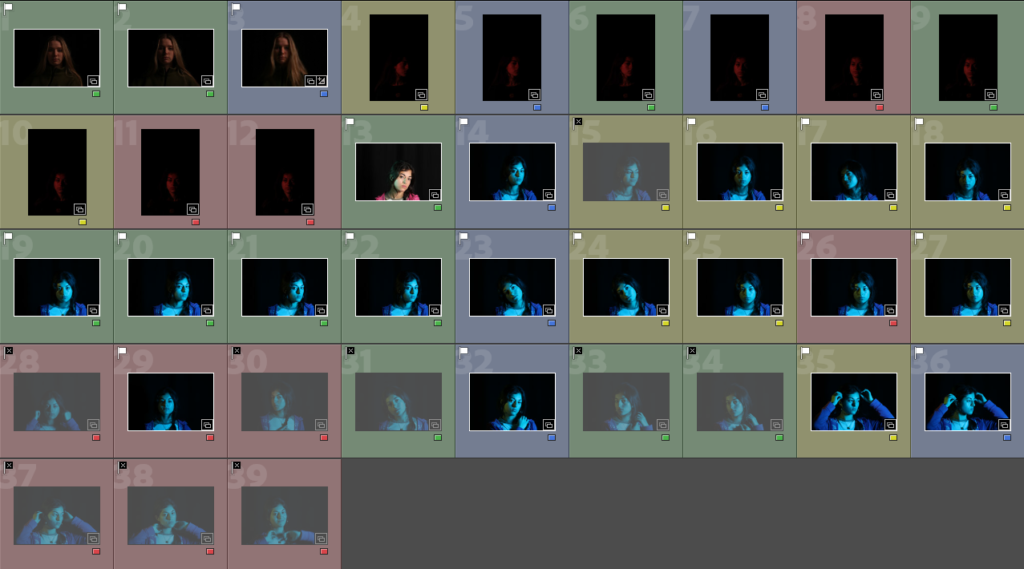
Editing:
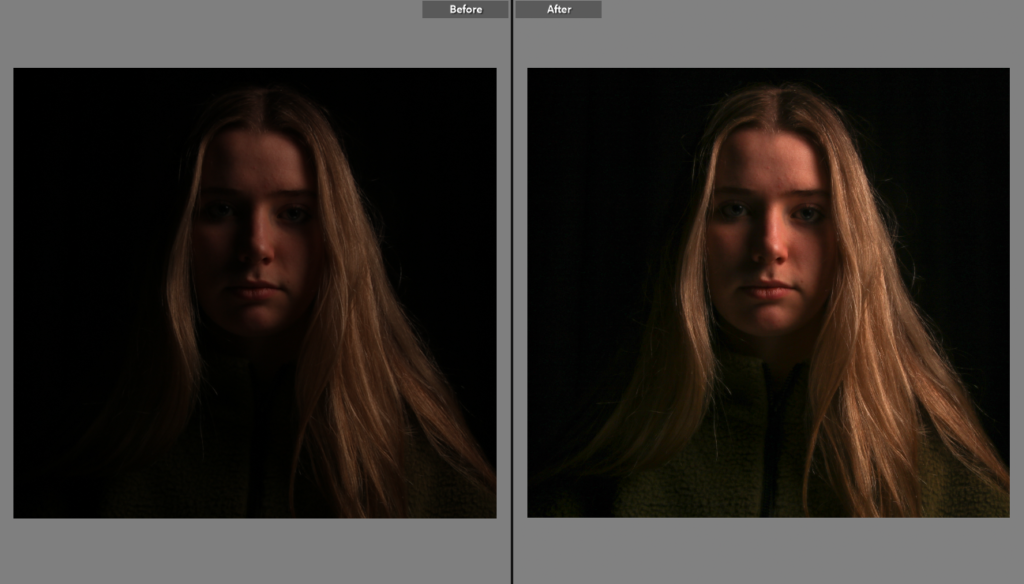


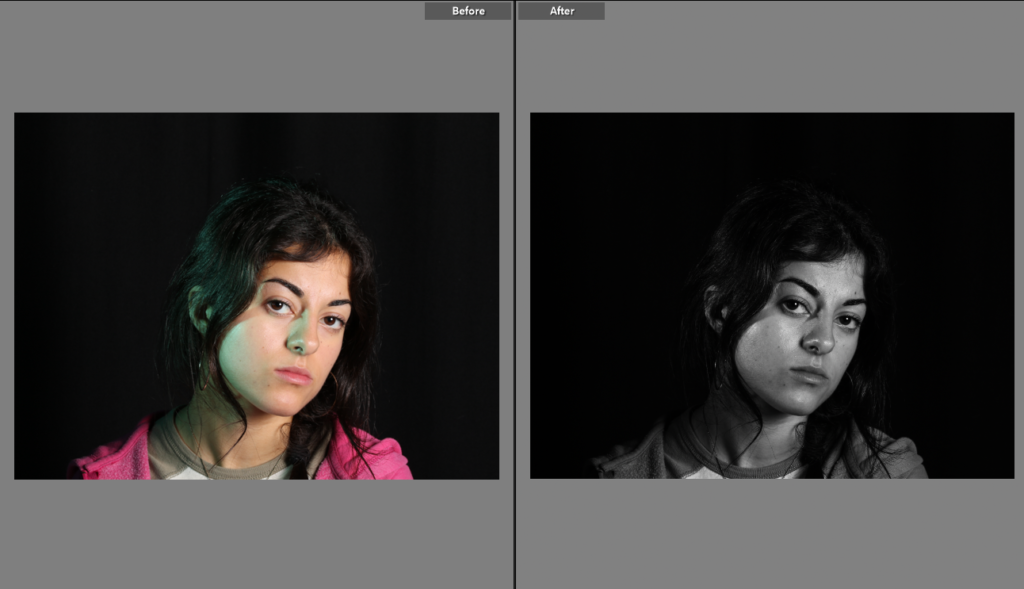
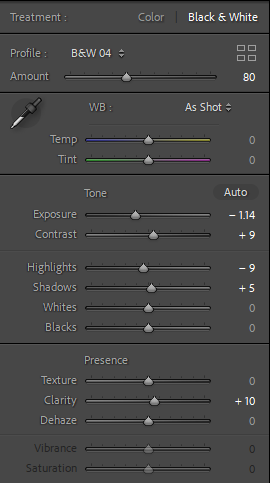
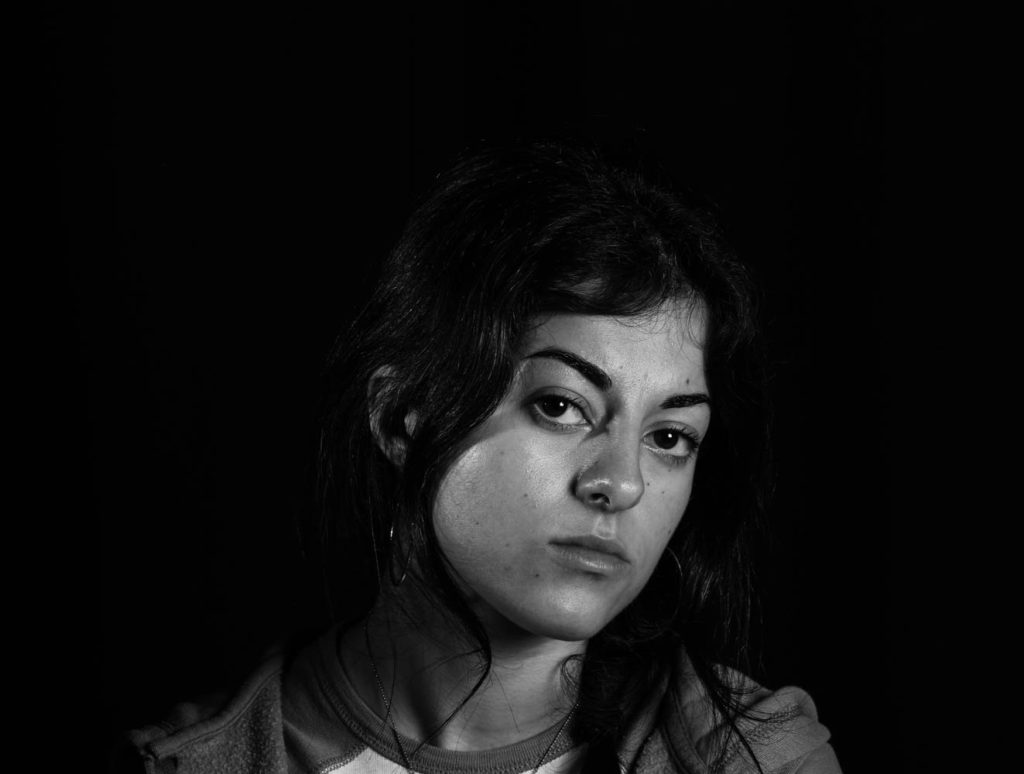

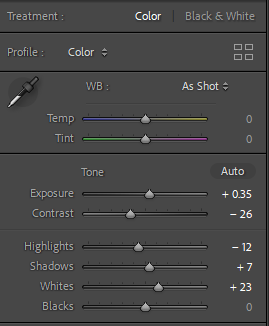
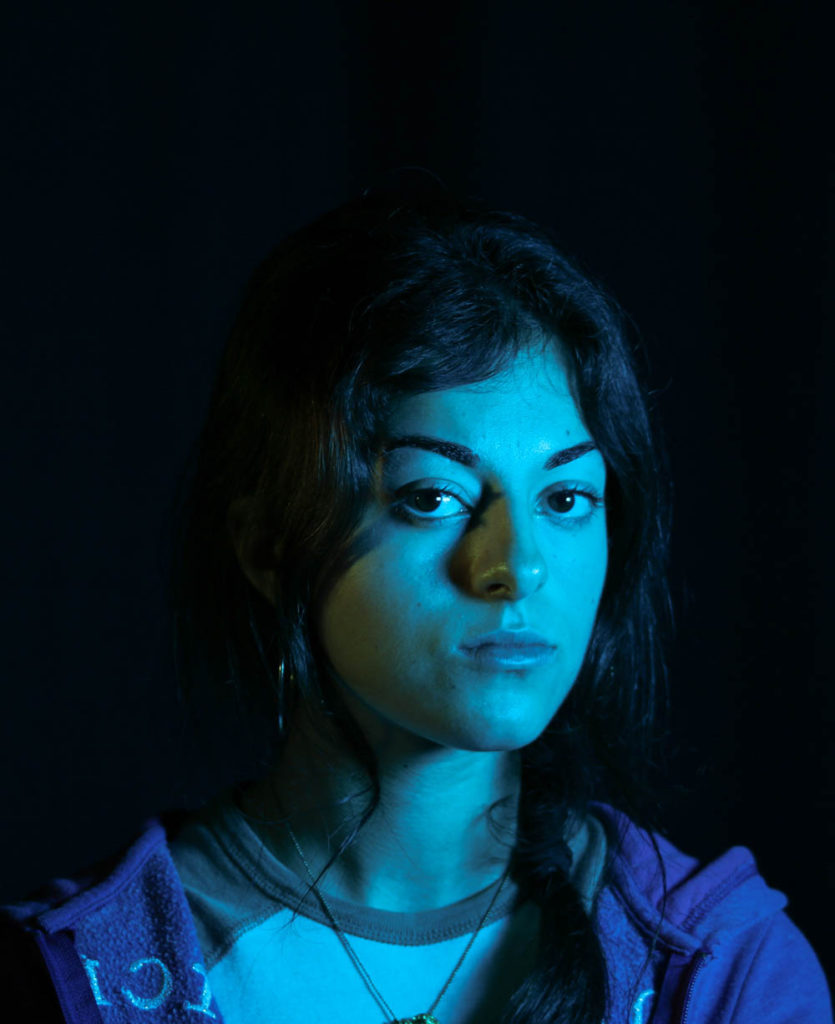
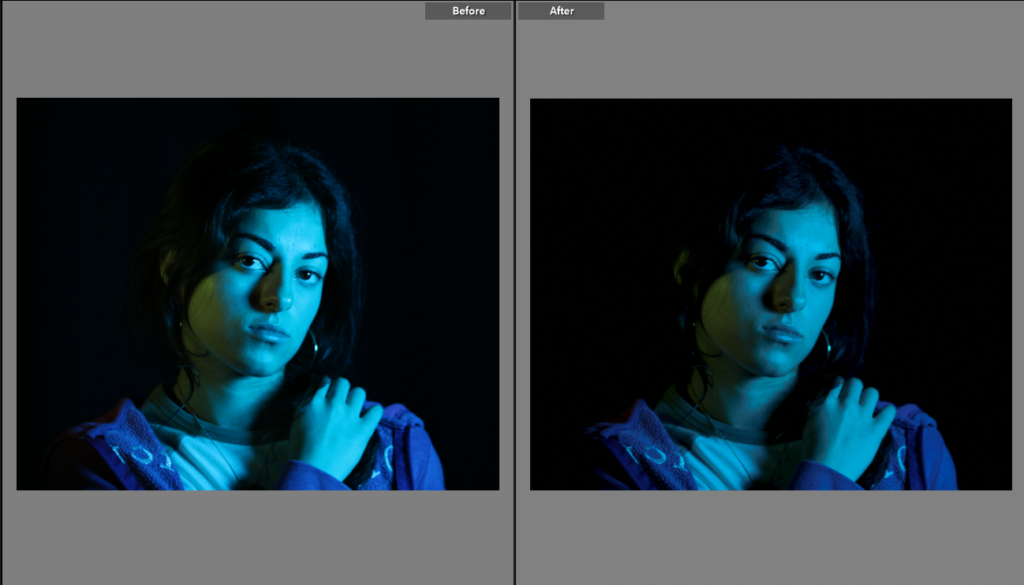

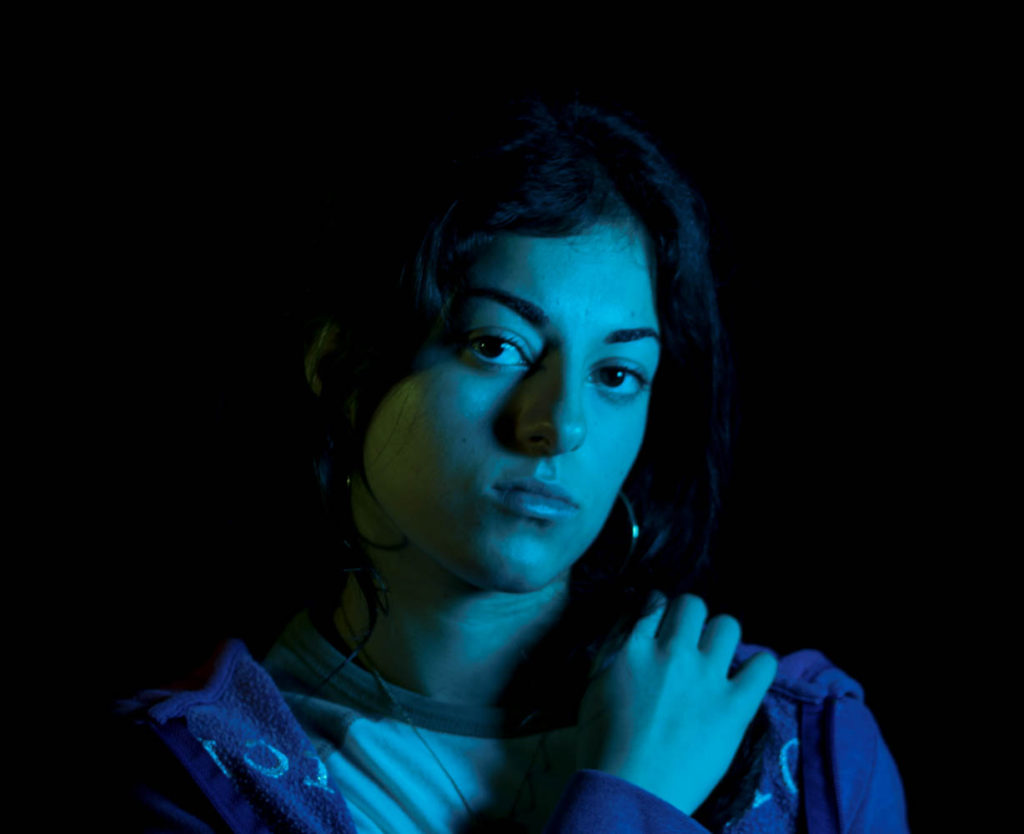
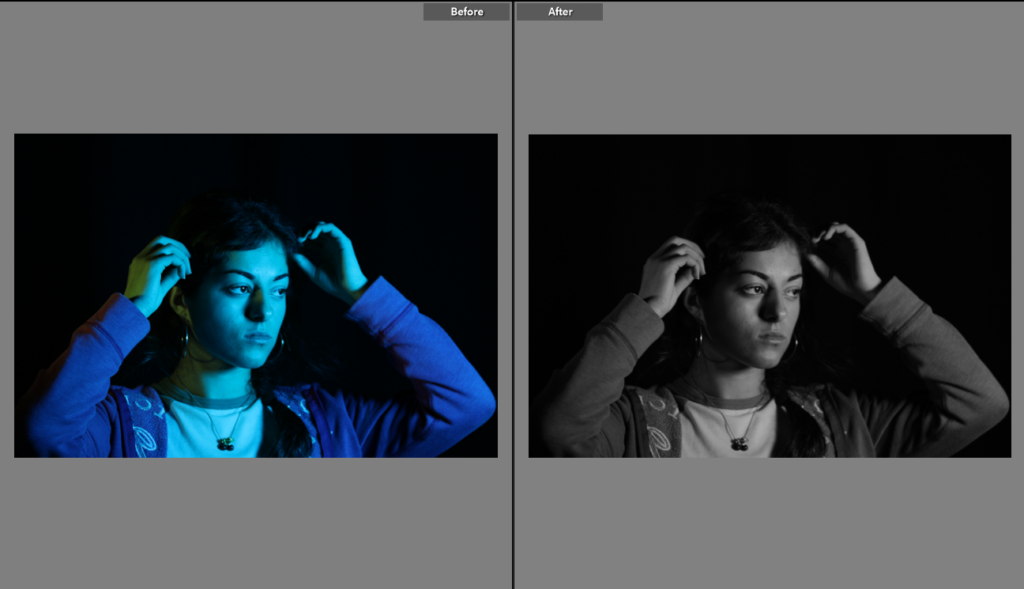

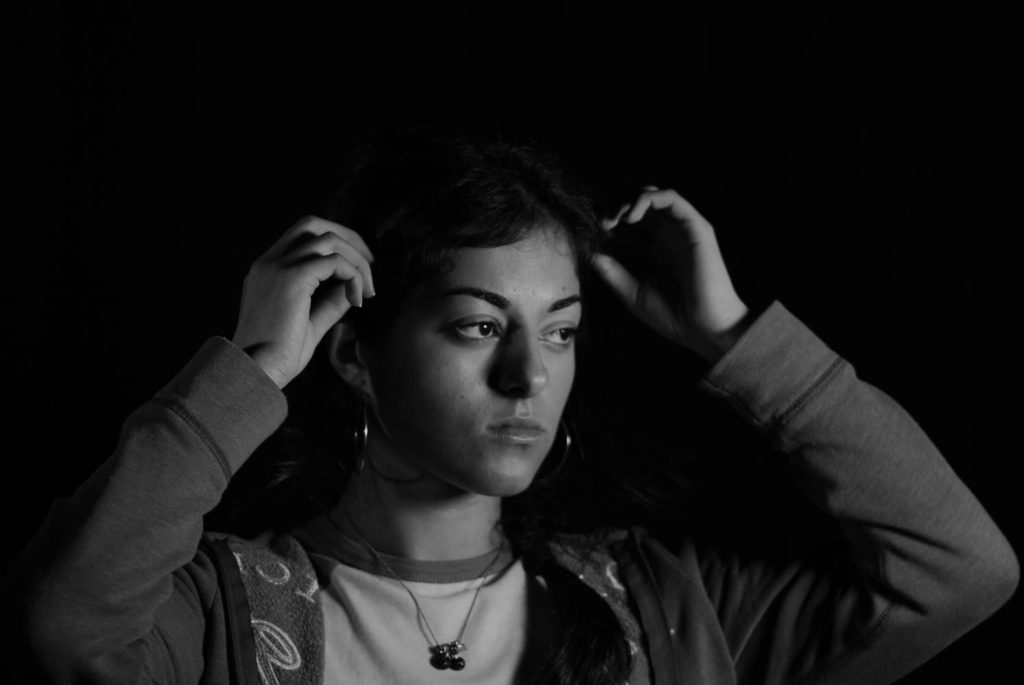
Final outcomes:

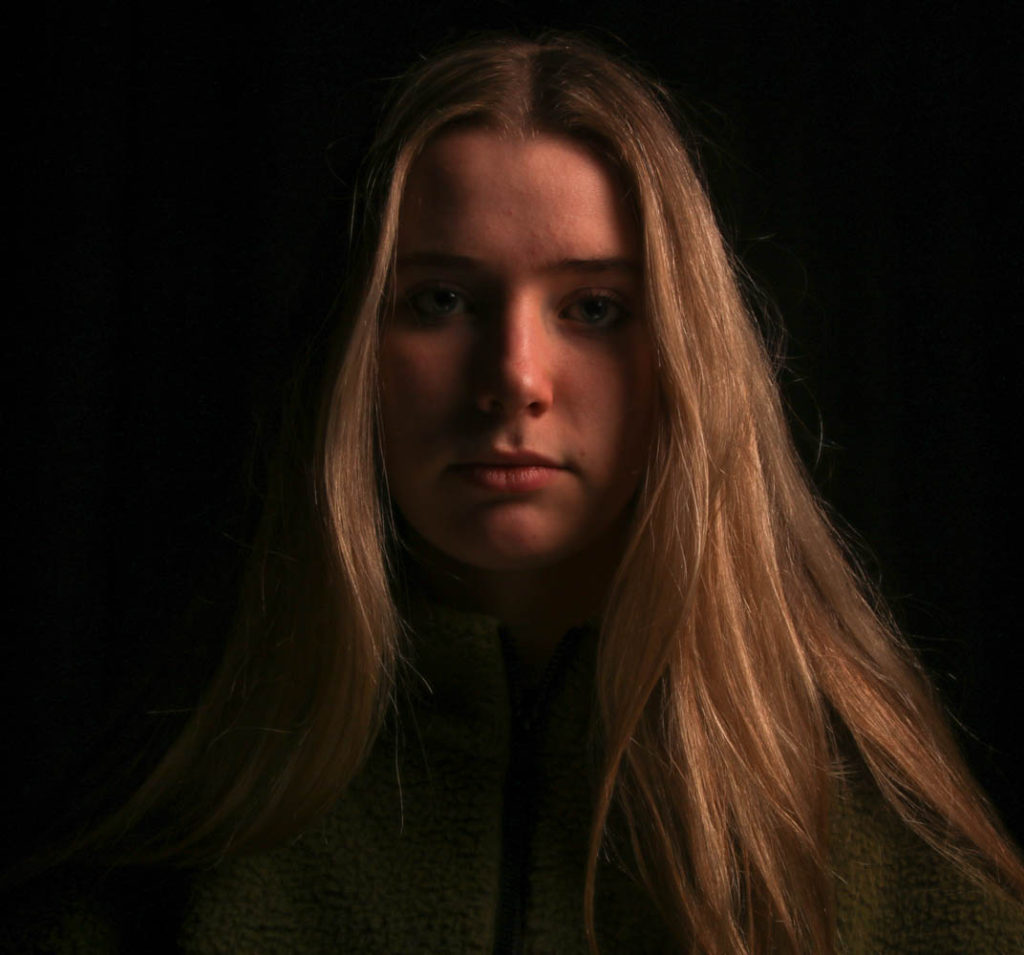


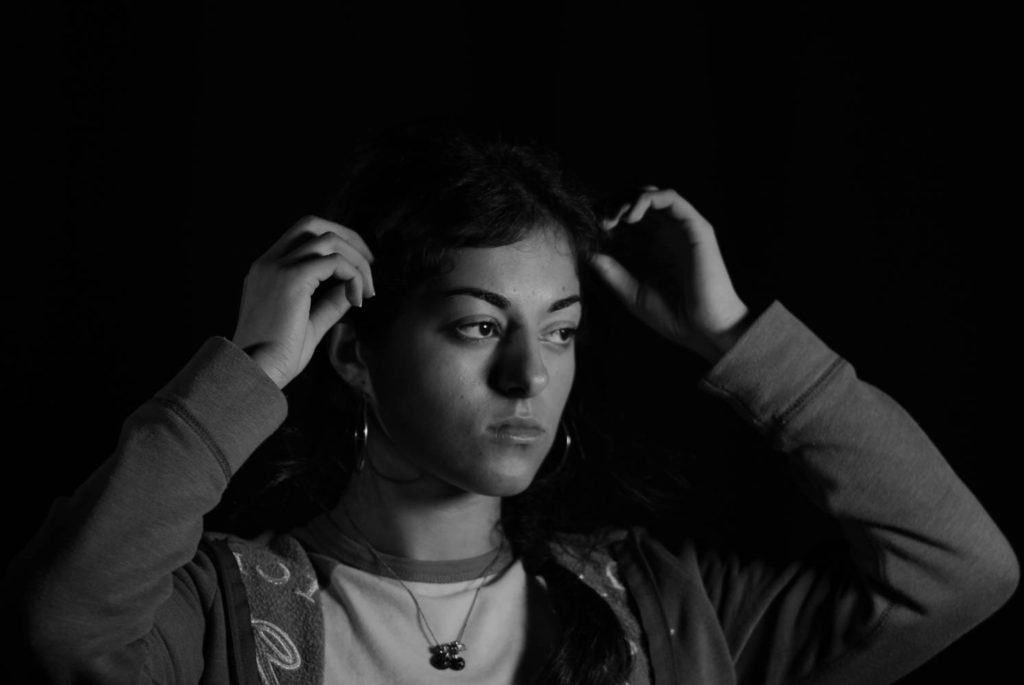
























Identity politics
First coined in 1974, by Black feminist Barbara Smith and the Combahee River Collective, the term identity politics refers to political positions that are based on the social groups that people see themselves as belonging to.
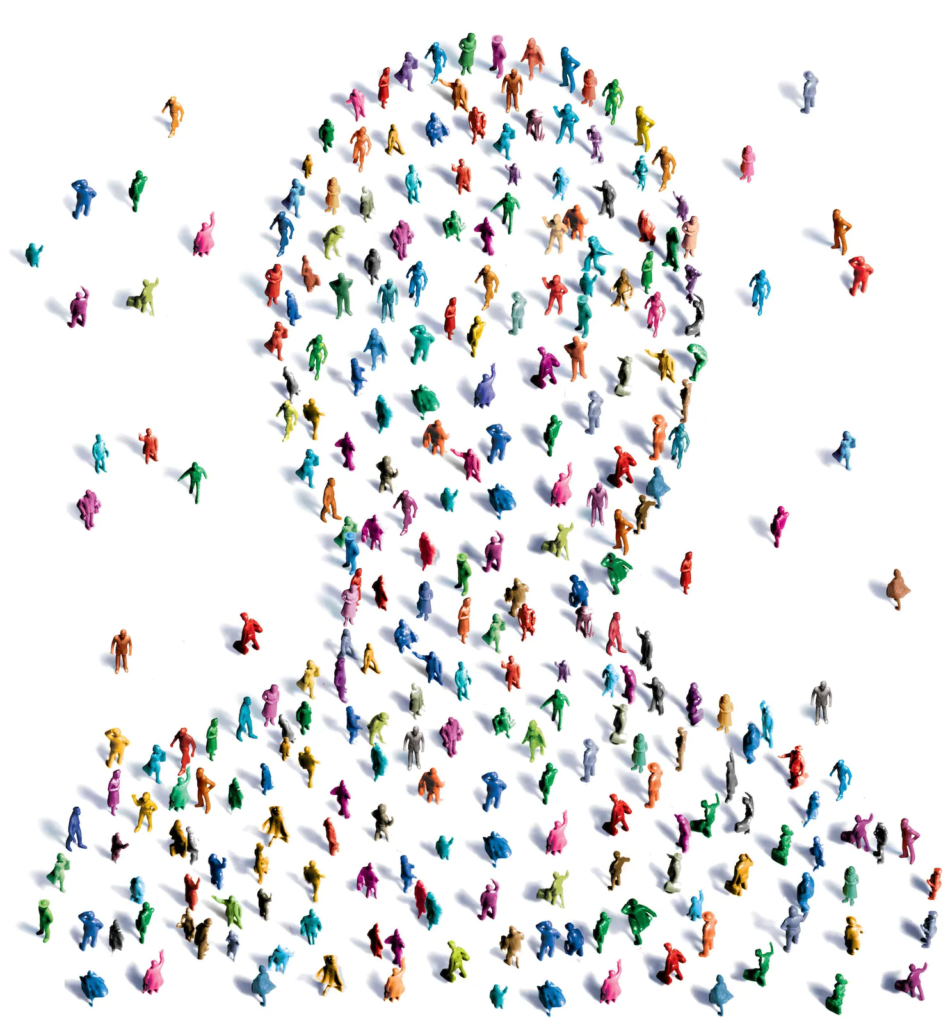
The idea of identity politics originated from the need for change. Emphasising the priority of the need for sameness, lead to the value of difference and individuality. Which is why it has been accepted, by some, as a strategic form of combat against discrimination and marginalisation.
During the feminist movements in the 1970s, the demand for change and gaining the right to vote was centred around change for white women, and not all women. The Combahee River Collective detailed how their experiences as Black women were different than those of white women, and this mattered because understanding the ways in which racial, economic, gender, and other oppressions were linked and shaped their lives helped to make sure that no one could be left behind.
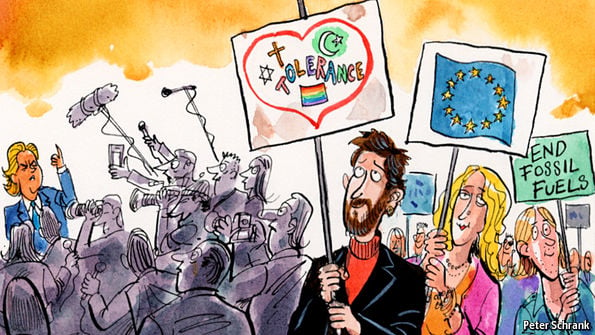
It often relate to issues such as abortion, homosexuality, transgender rights, pornography, multiculturalism and racism. Identity conflicts also involve fundamental orientations such as religion and ideology, as well as political issues ranging from freedom of speech to the distribution of wealth and privilege.
Here is a take from intelligence², which gives a little more insight “To some people, this is a dangerous trend. True, many minorities have suffered discrimination and exclusion and they deserve to enjoy the rights that the straight, white majority take for granted. But critics claim that the fight for equality has spilled over into hostility towards the majority, with identity group activists telling white people to check their privilege or labelling them white supremacists. Such sentiments have stoked anger among white people who feel very far from privileged or in control, fuelling the rise of populism and bringing alt-right figures such as Steve Bannon to the fore. The identity politics movement tells people that their experience as a member of a particular group is what ultimately defines them and gives their lives meaning. This message is destroying society’s broad sense of the common good, increasing antagonism and fragmentation in our society.”
Culture wars
Culture wars refers to conflict between groups that have different cultural ideals, beliefs, or philosophies. Typically, the opposing groups are liberals and conservatives.
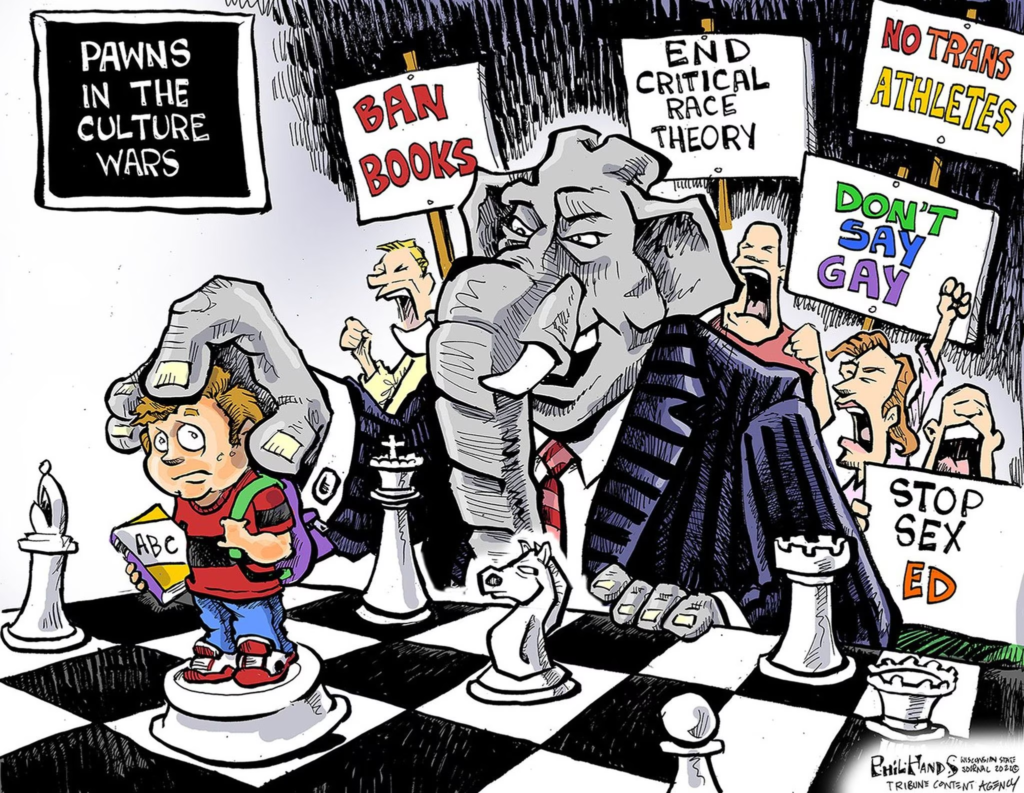
Most recently, culture wars have been enacted due to the issues of abortion, racism, homosexuality, and transgender rights.
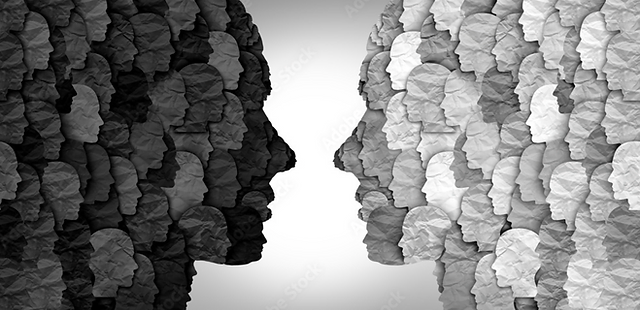
Overall, culture wars can be very harmful on society. Especially when the result is in control of people in power, who can easily impact one of these minorities and marginalized groups negatively. For example, in America with the overturn of Roe v. Wade by the U.S. Supreme Court in June 2022, abortion policies and reproductive rights are in the hands of each state. Half of U.S. states are expected to ban abortion in the days and weeks following the Court’s decision taking away the constitutional right to abortion. This movement has pejoratively affected women and has set back women’s rights immensely. It also means that women lose some control of their bodies and removes their choice.
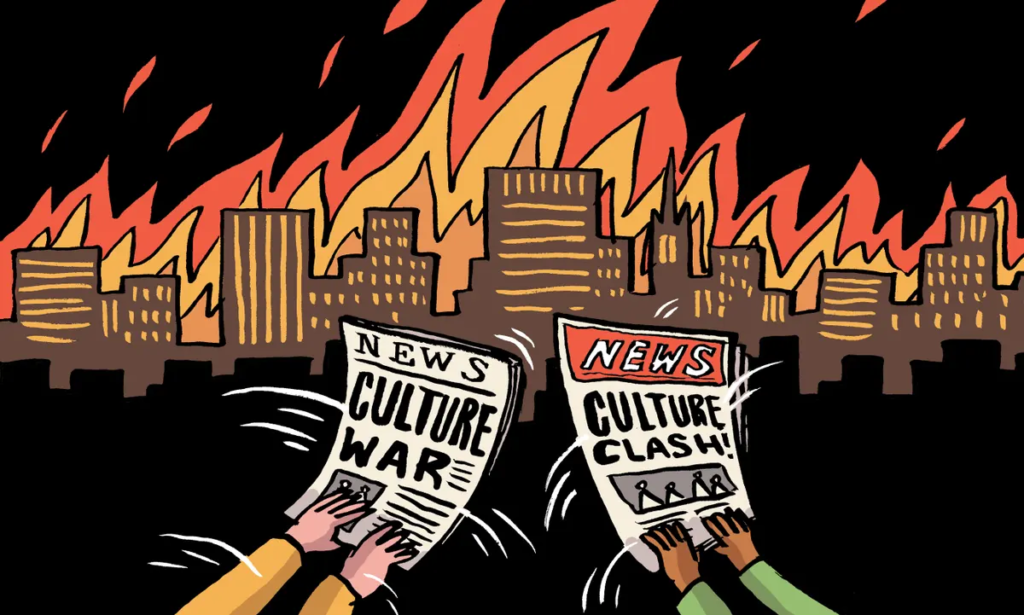
My chosen photographers to study for this unit are:
Claude Cahun

Claude Cahun used photography as a means of self-expression, often using elaborate and outlandish costumes and props to create both intriguing and surreal imagery that was especially shocking for their time (WWII era). Cahun’s work often subverts what people saw and still see as gender norms, rejecting them completely to see what it really is that forms a person’s identity.
William Lakin
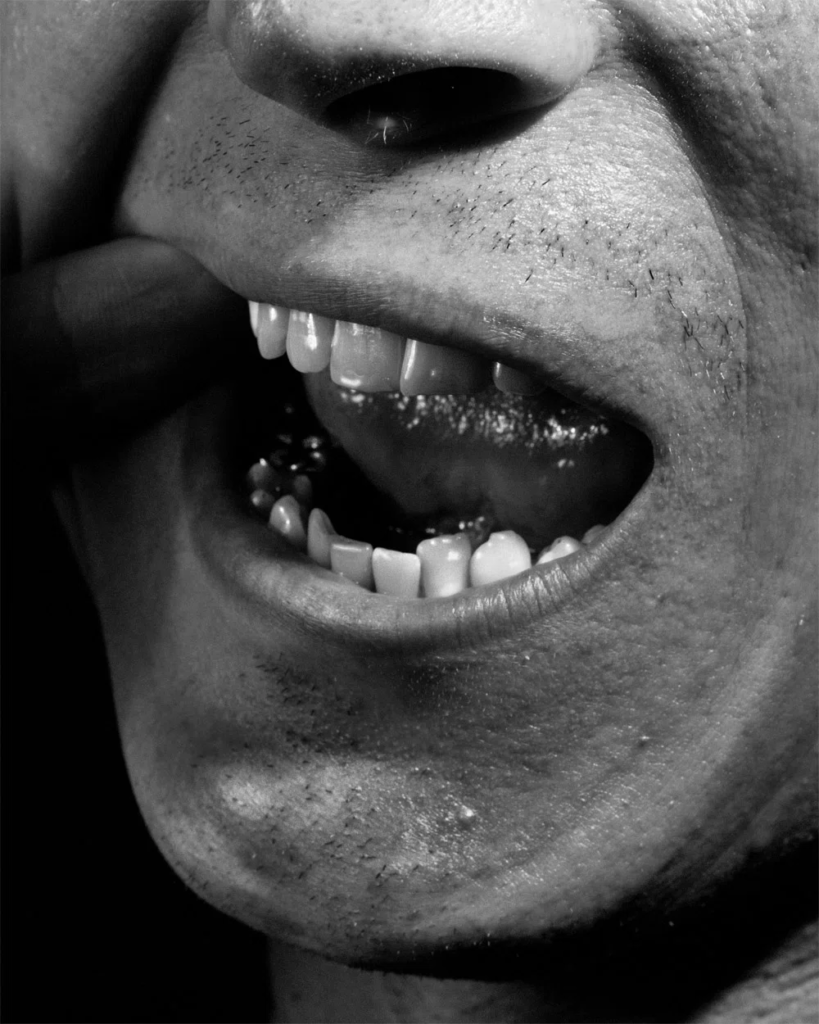
William Lakin’s work (in this instance) focuses on masculinity and how broad it really is as a term – how it is culturally reproduced into society – and what it means to people.
Clare Rae

Clare Rae’s work uses feminist theory to represent the female body in “an inherently fetishising medium”, developing a very distanced perspective toward gestures and positions the human form takes while in both public and private spaces.
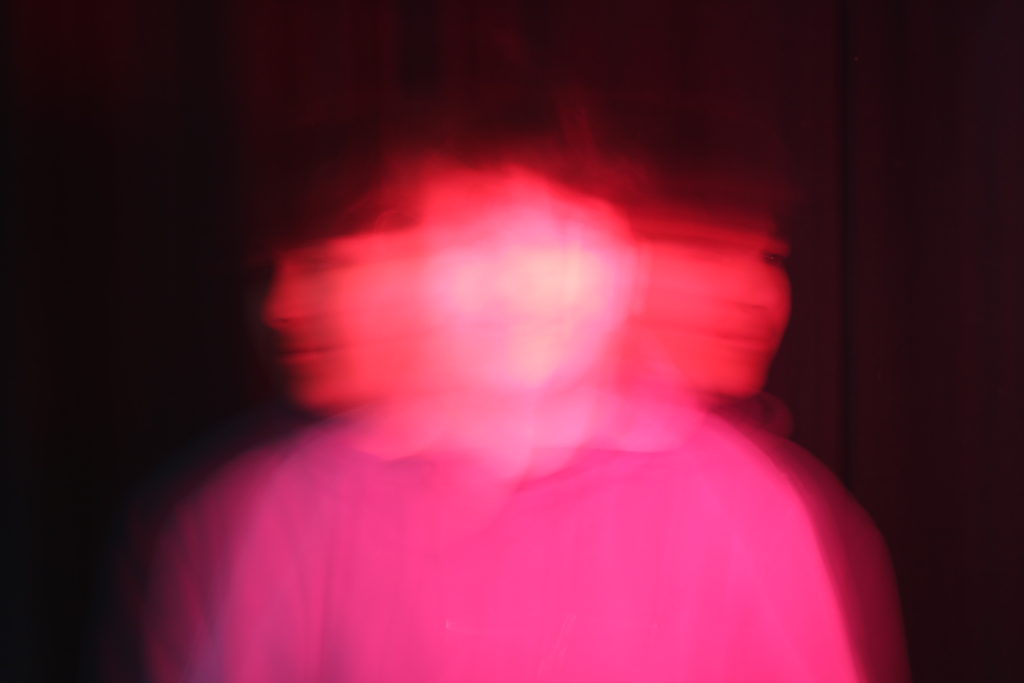
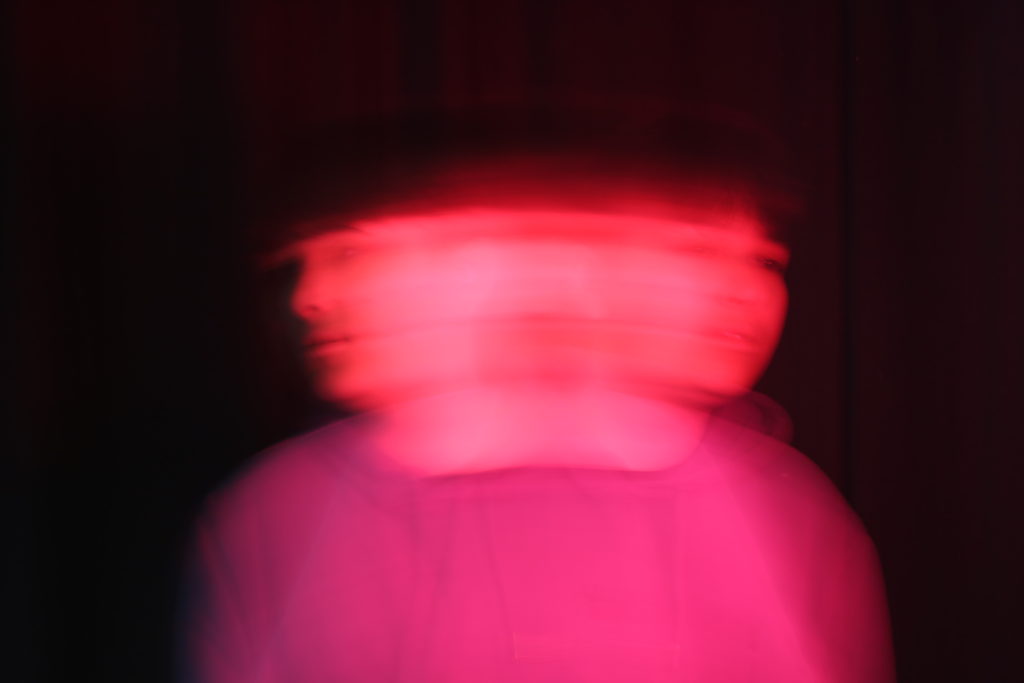
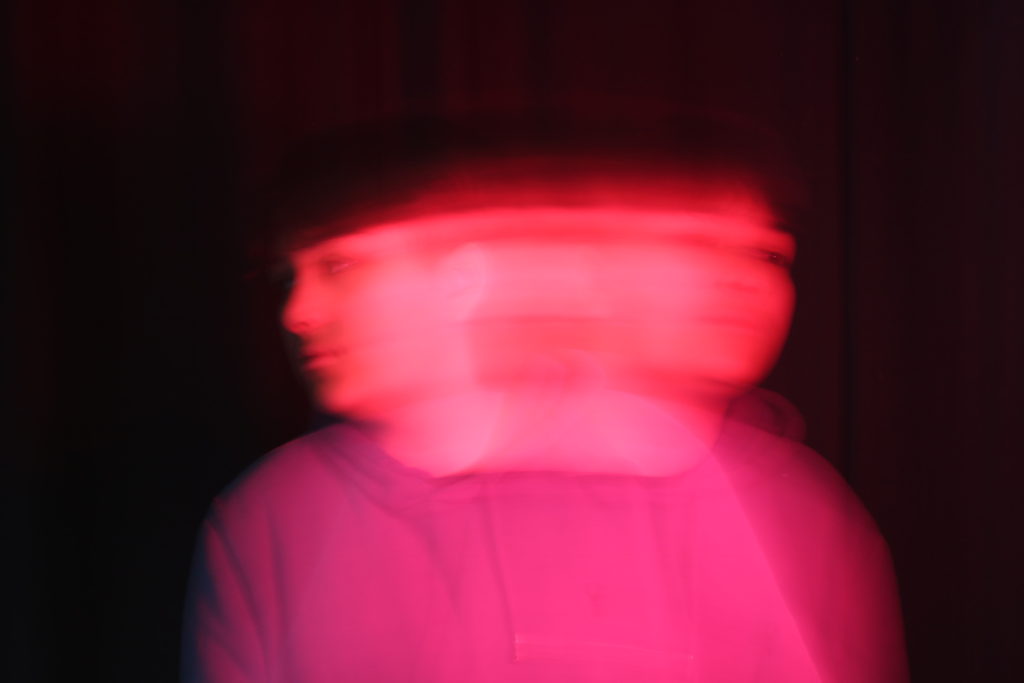

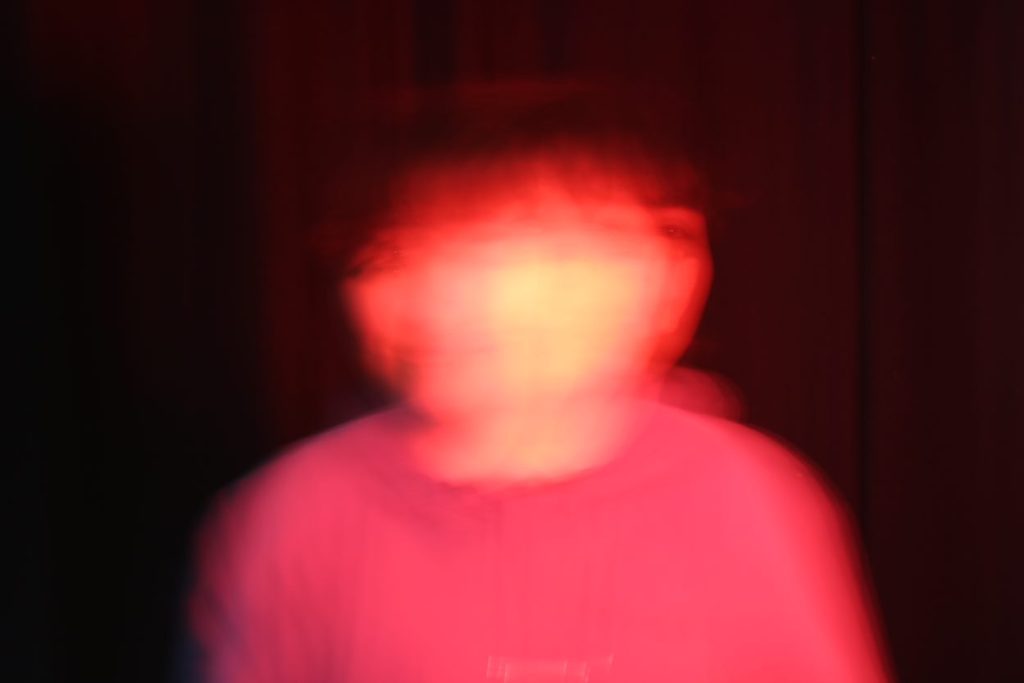

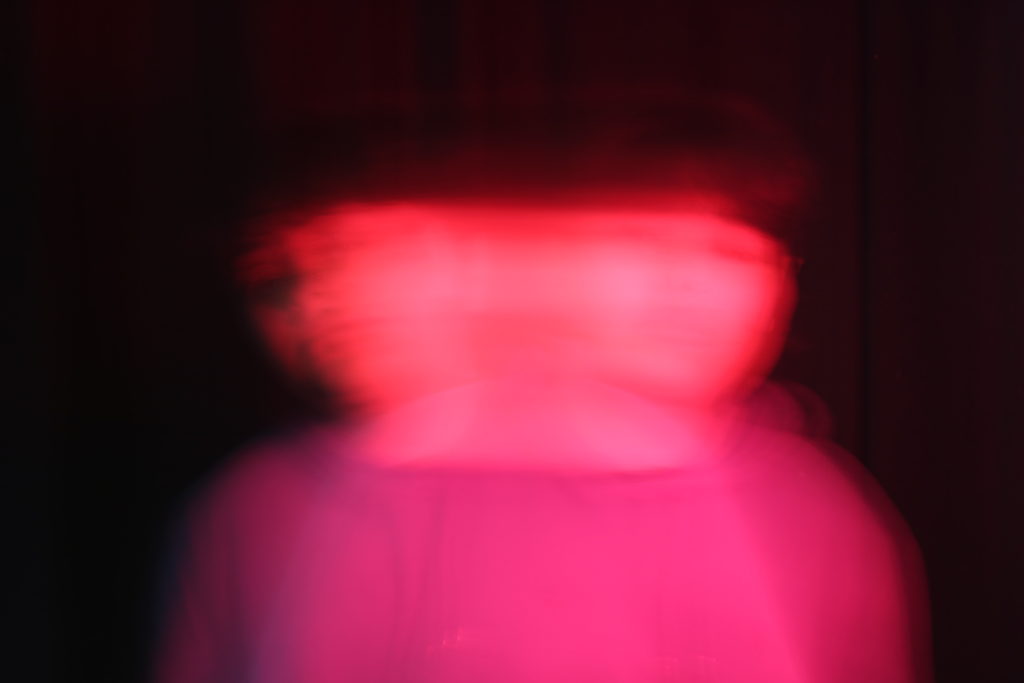
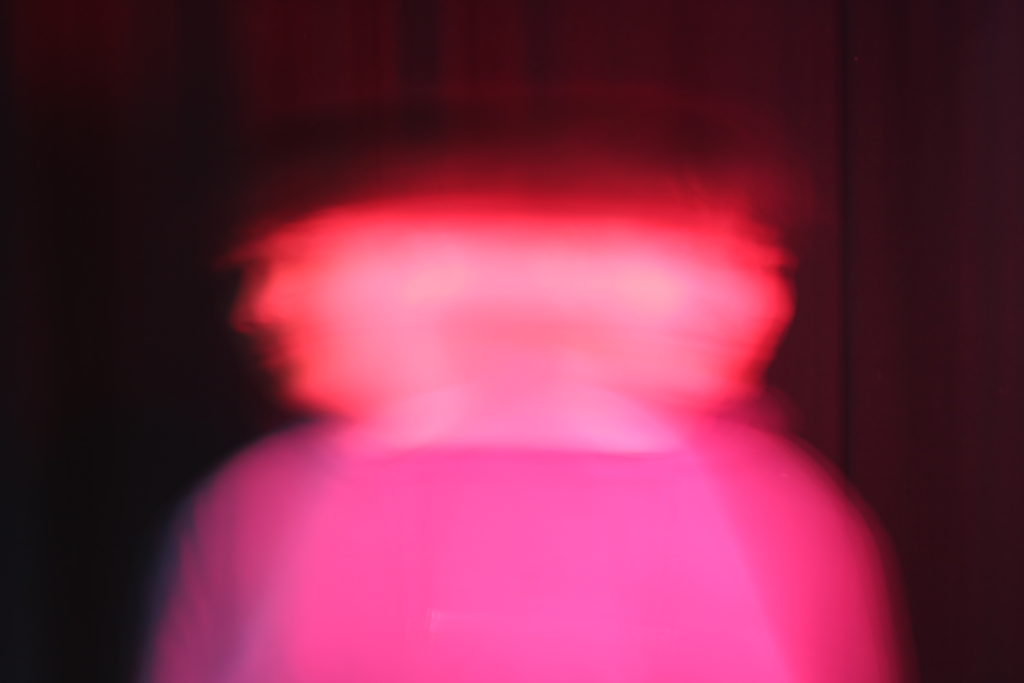
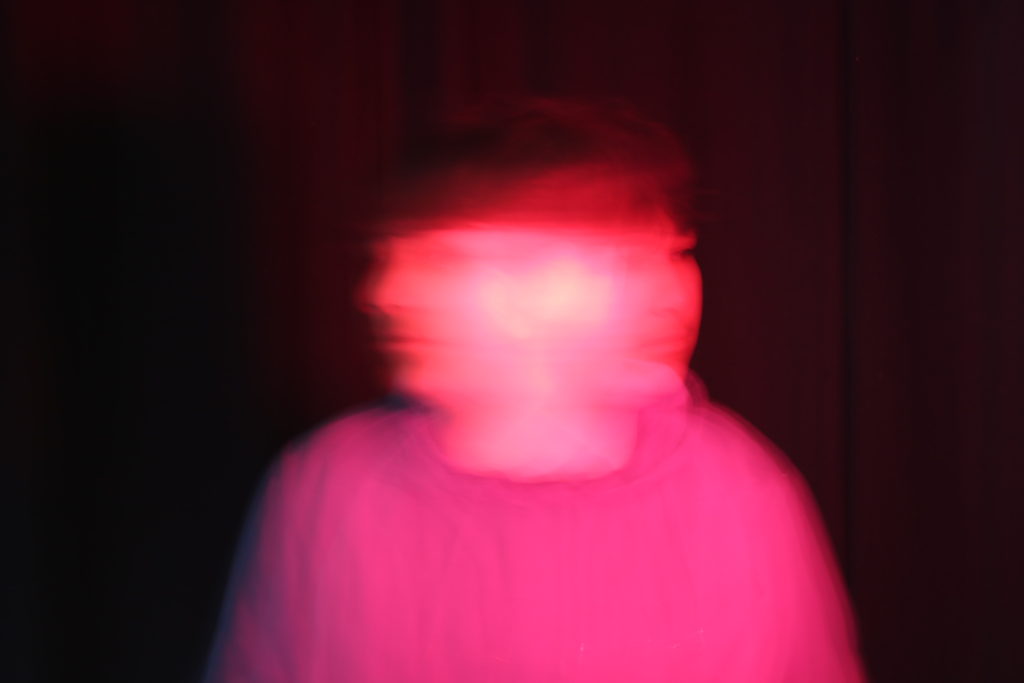
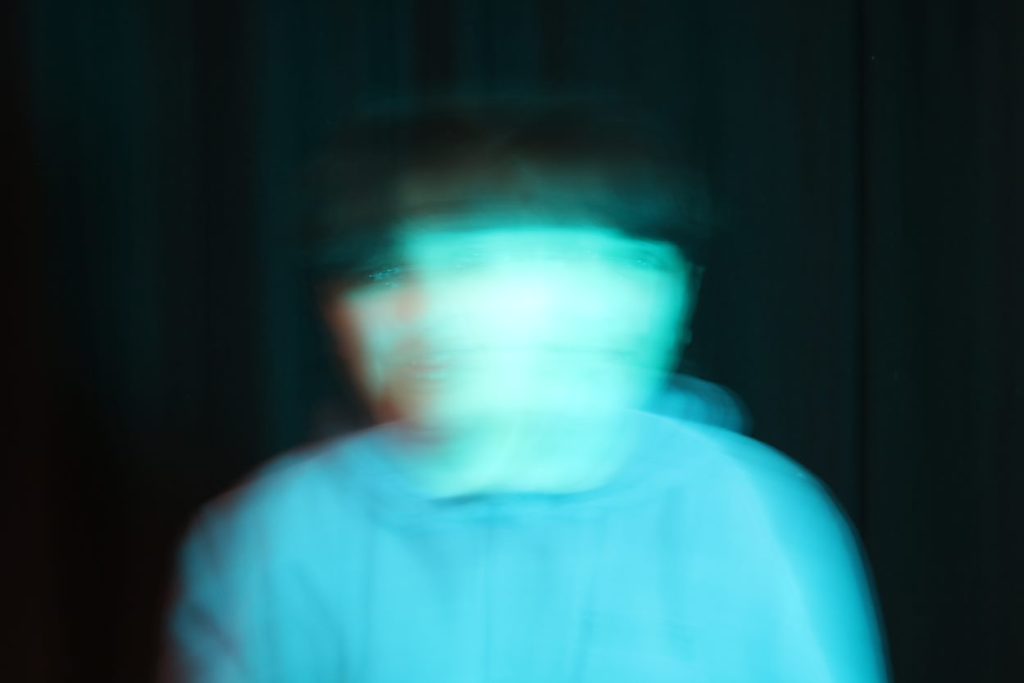
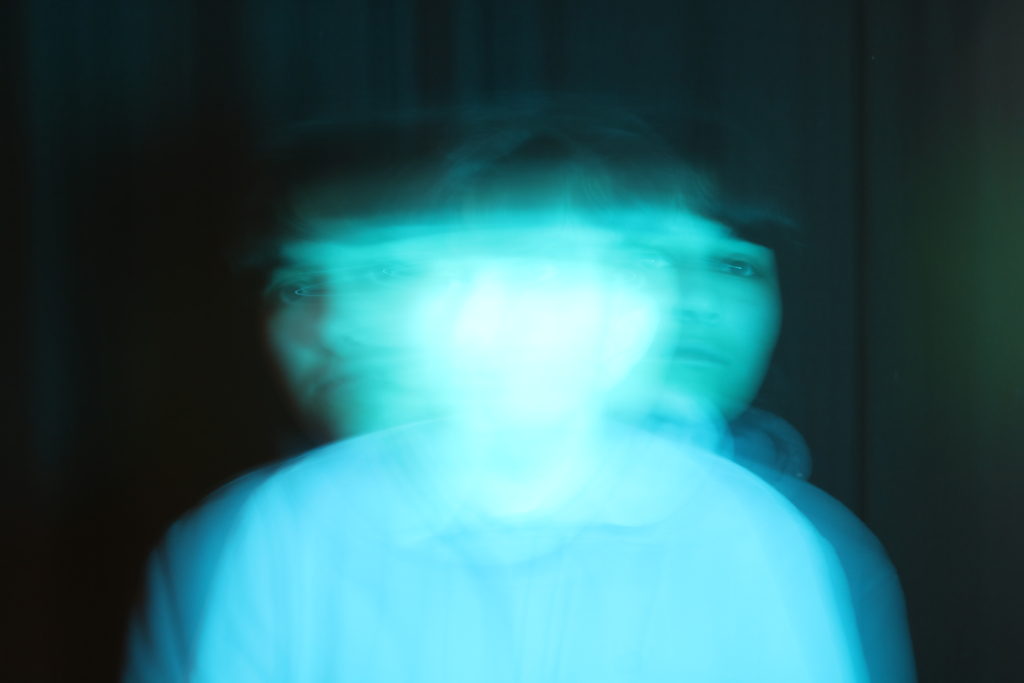

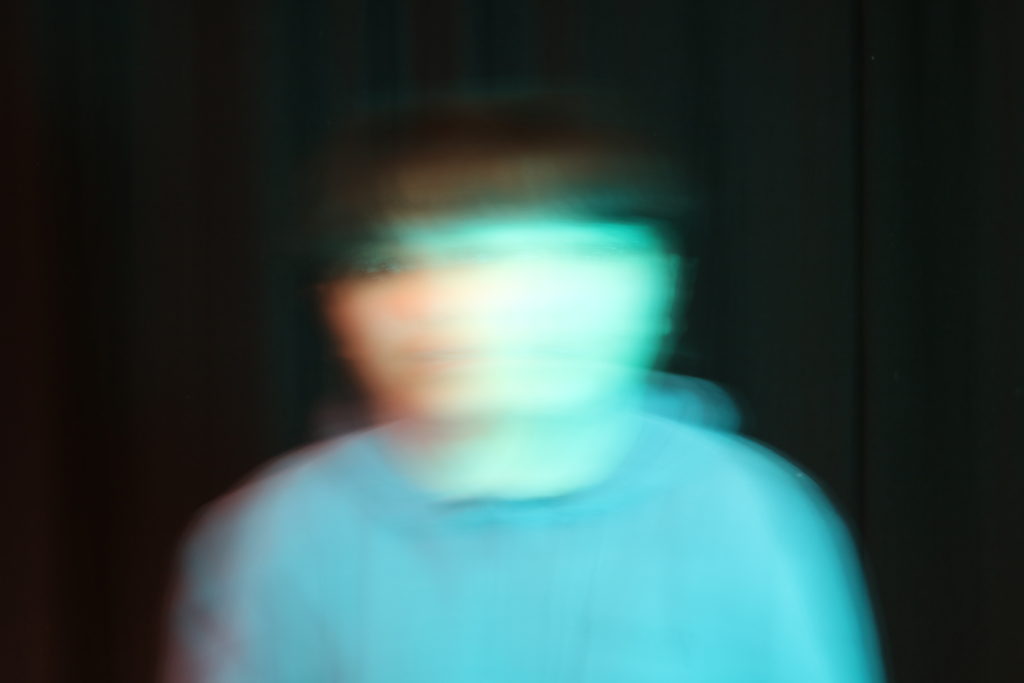
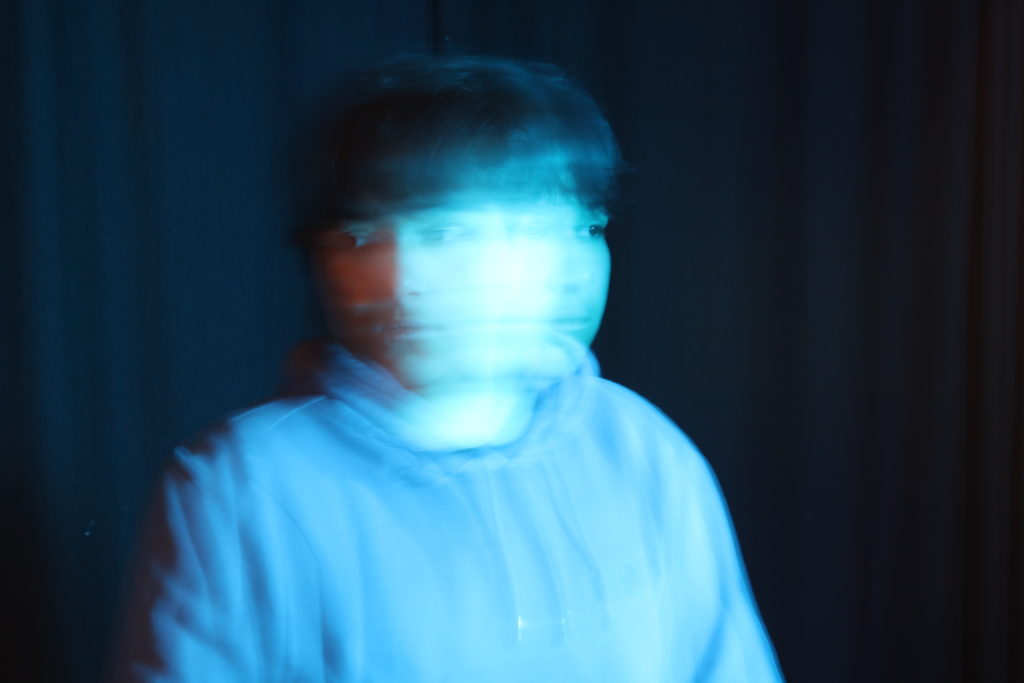
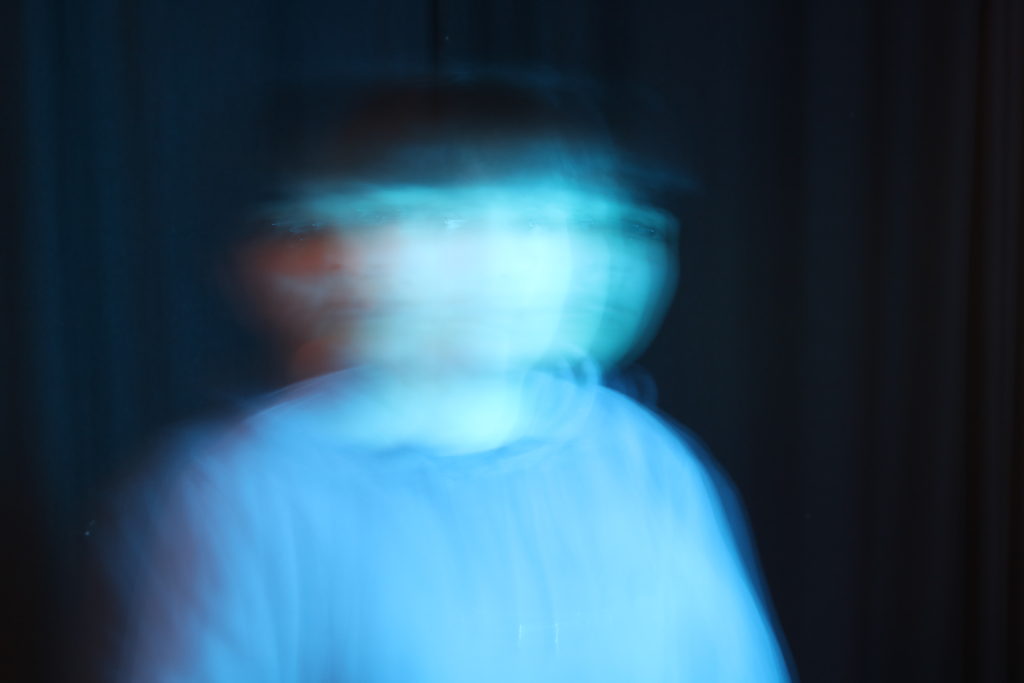
These pictures were taken using a very slow shutter speed, and the model moved side to side repetitively, creating an interesting smudged effect, adding multiple exposures of the model.
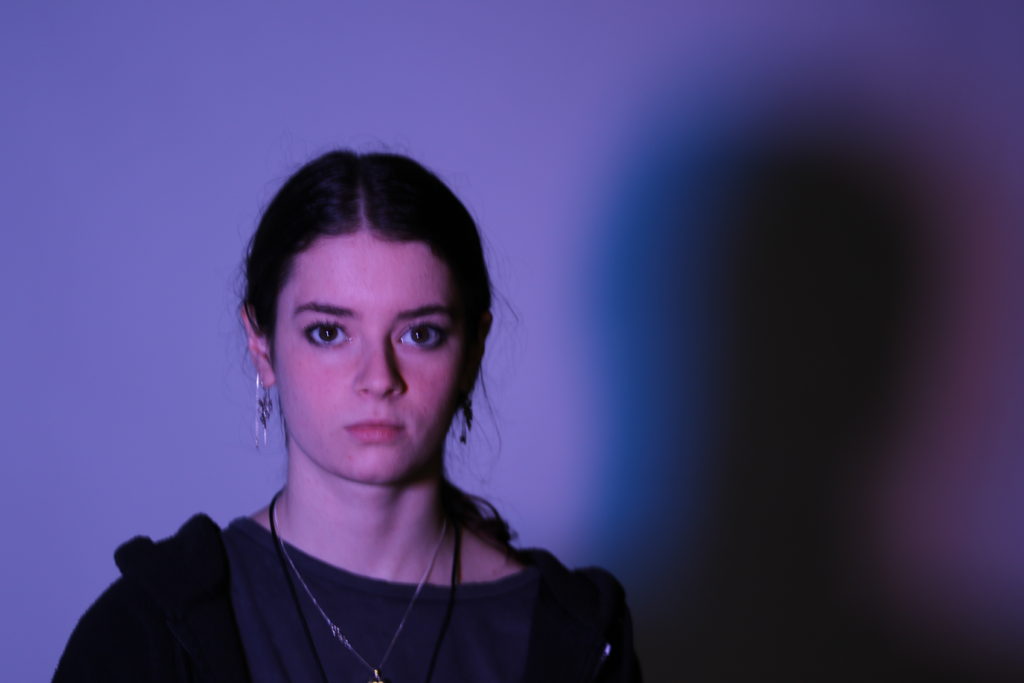
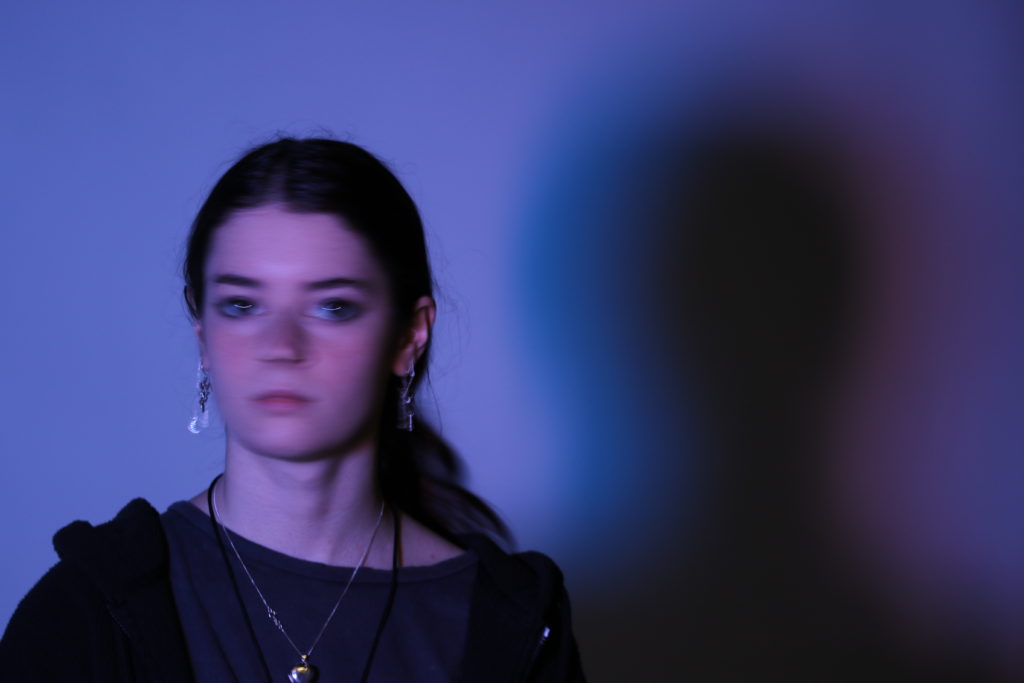

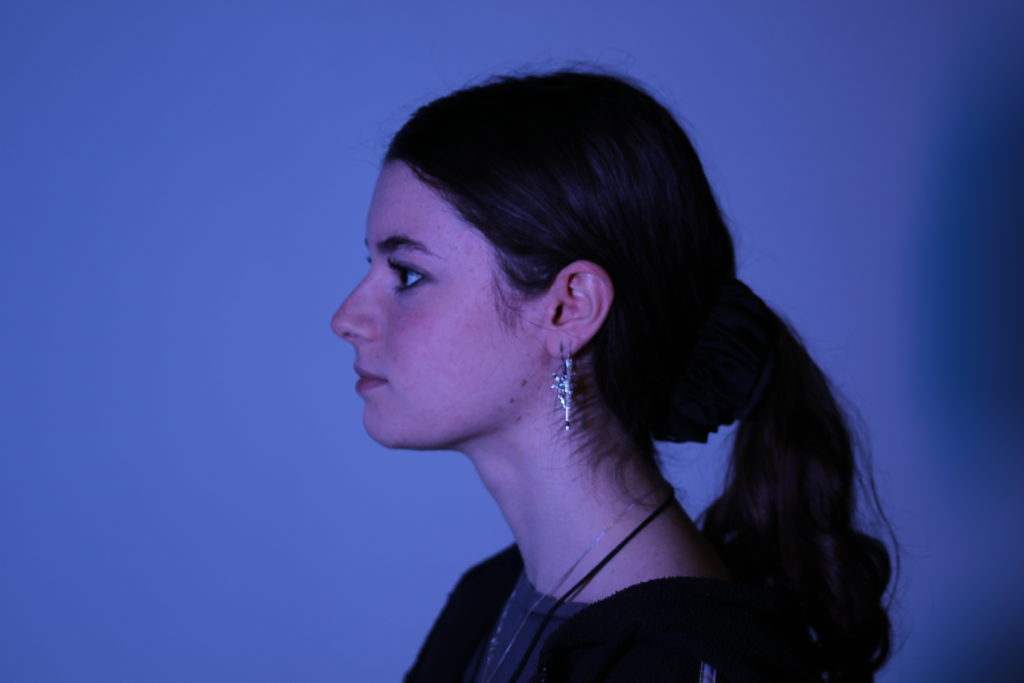
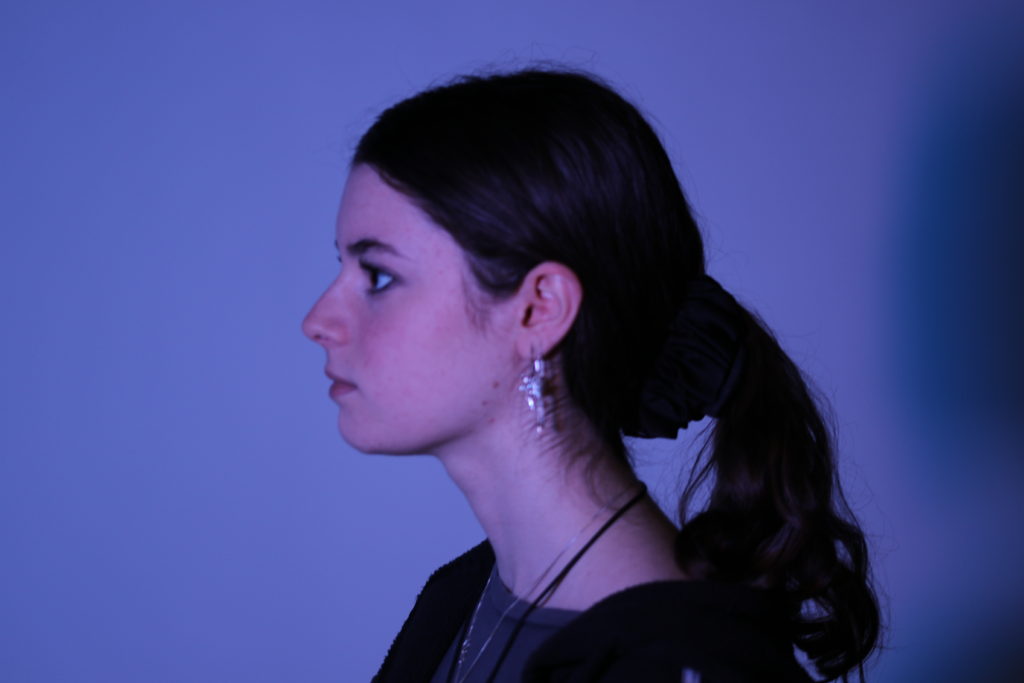

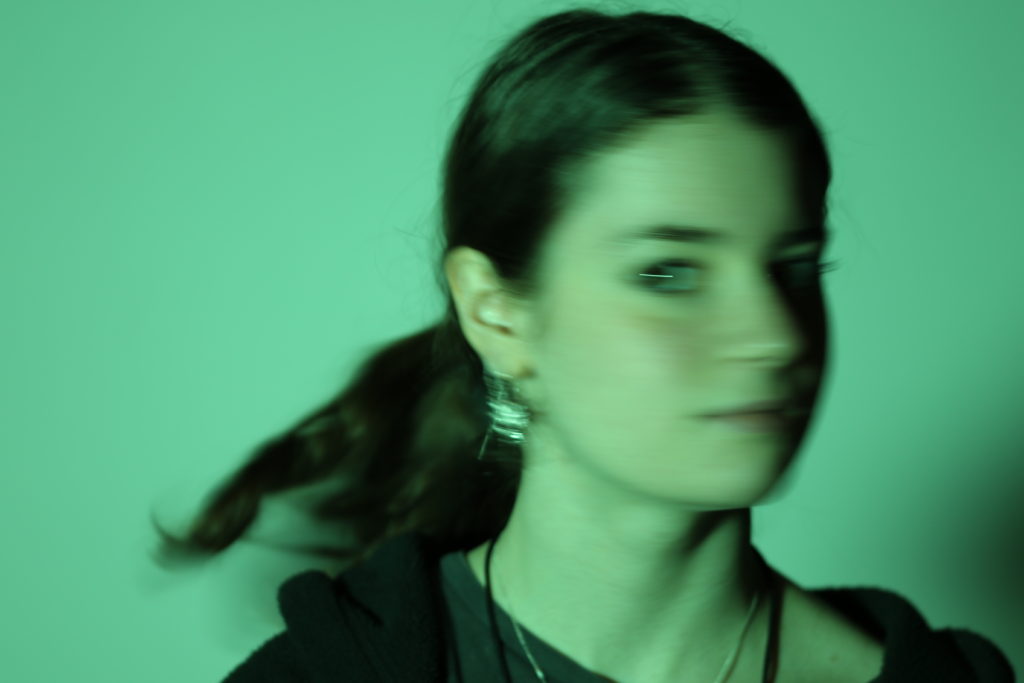
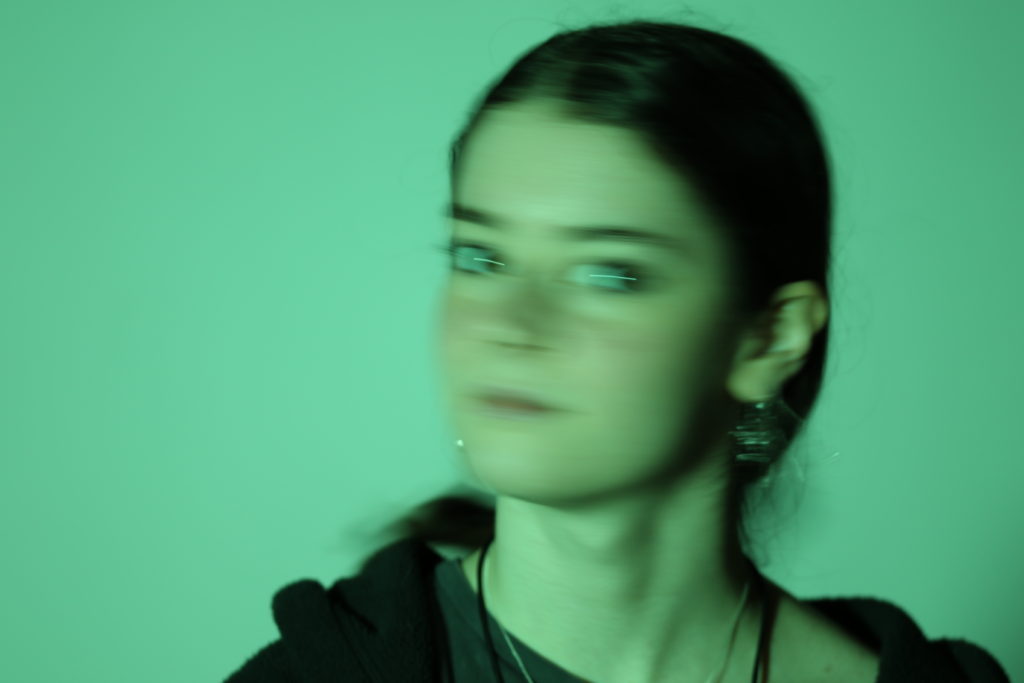
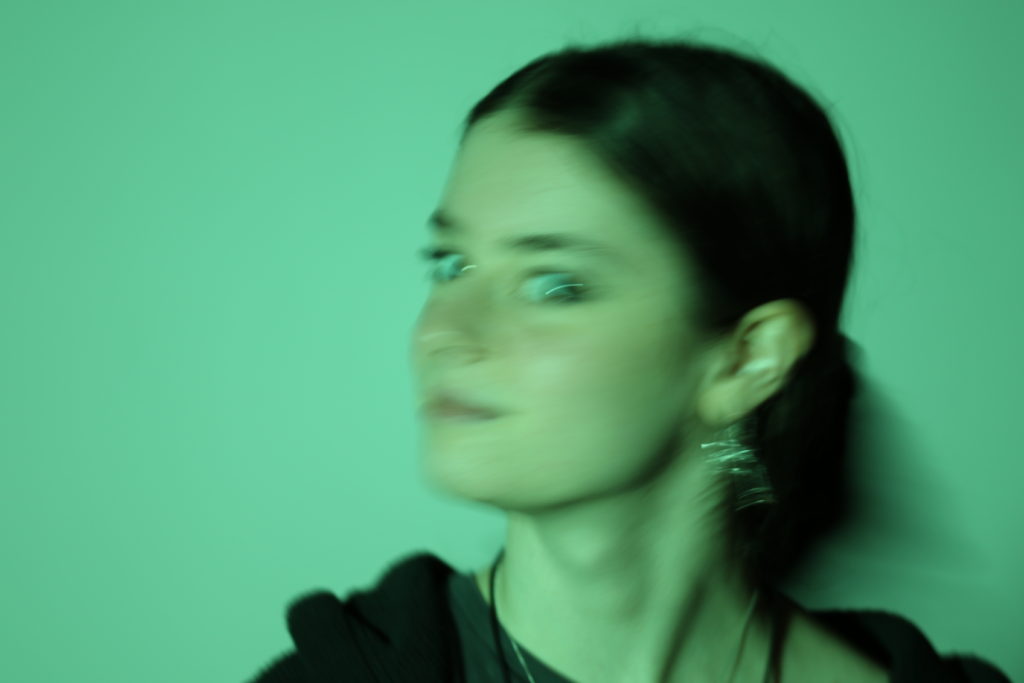
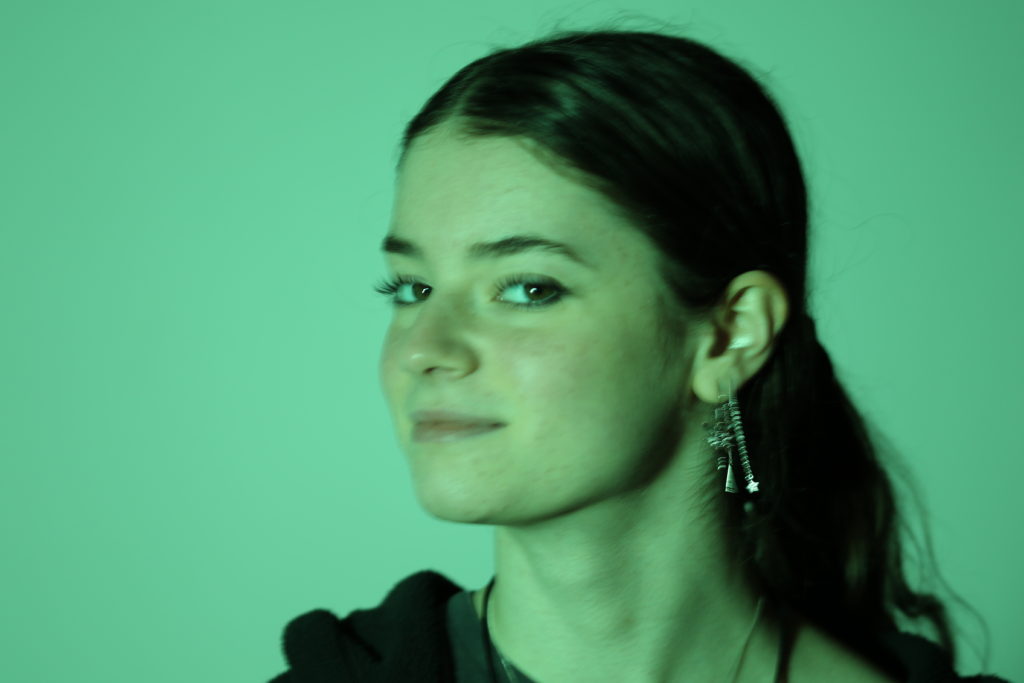
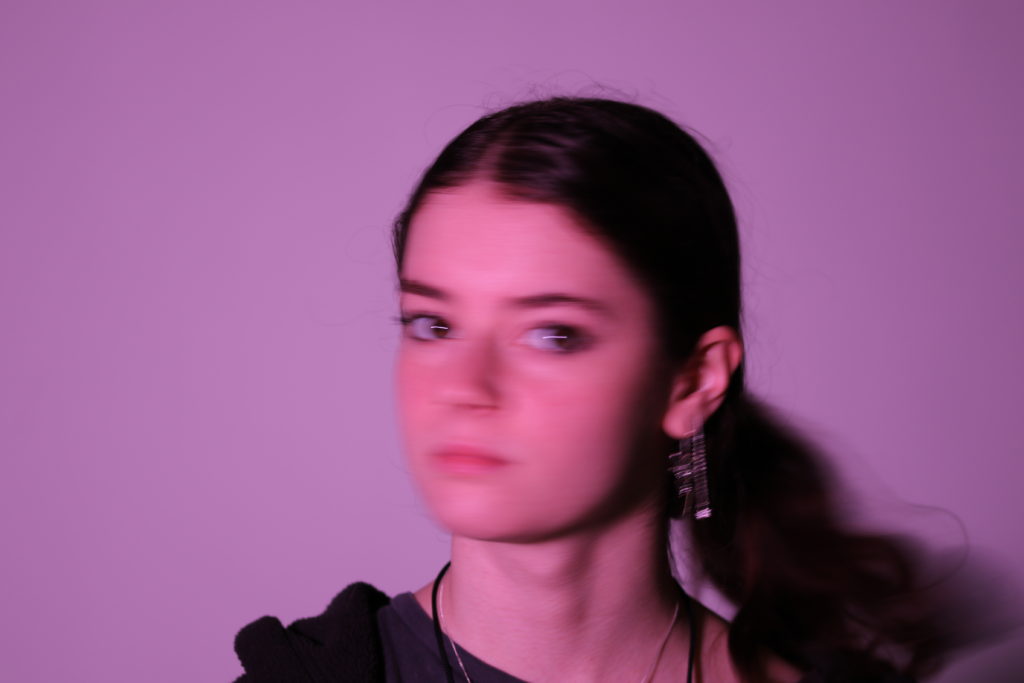
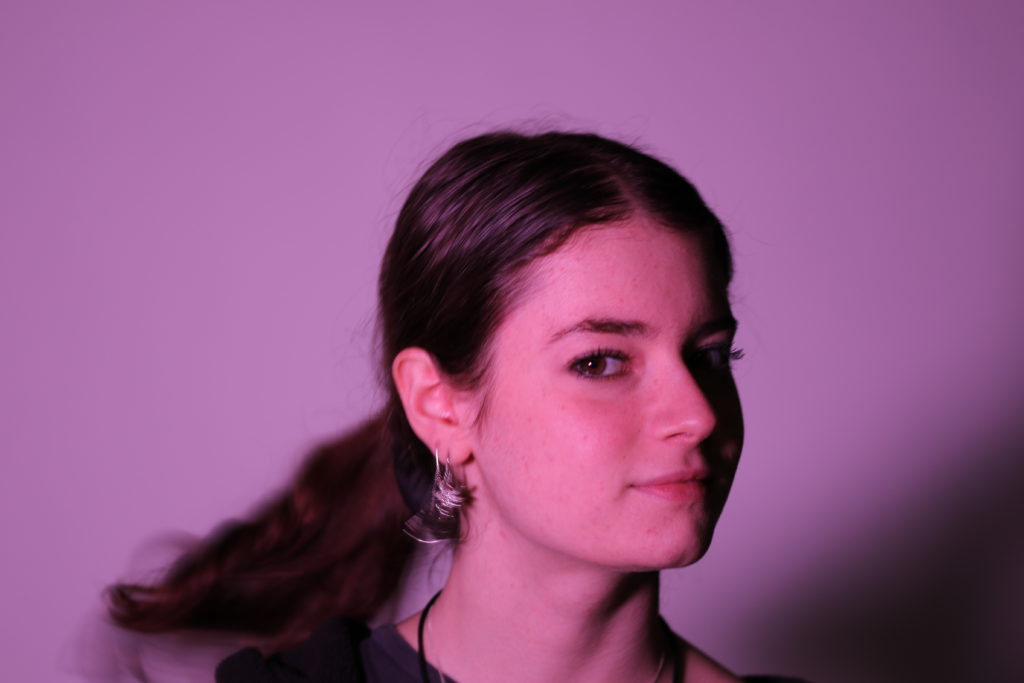
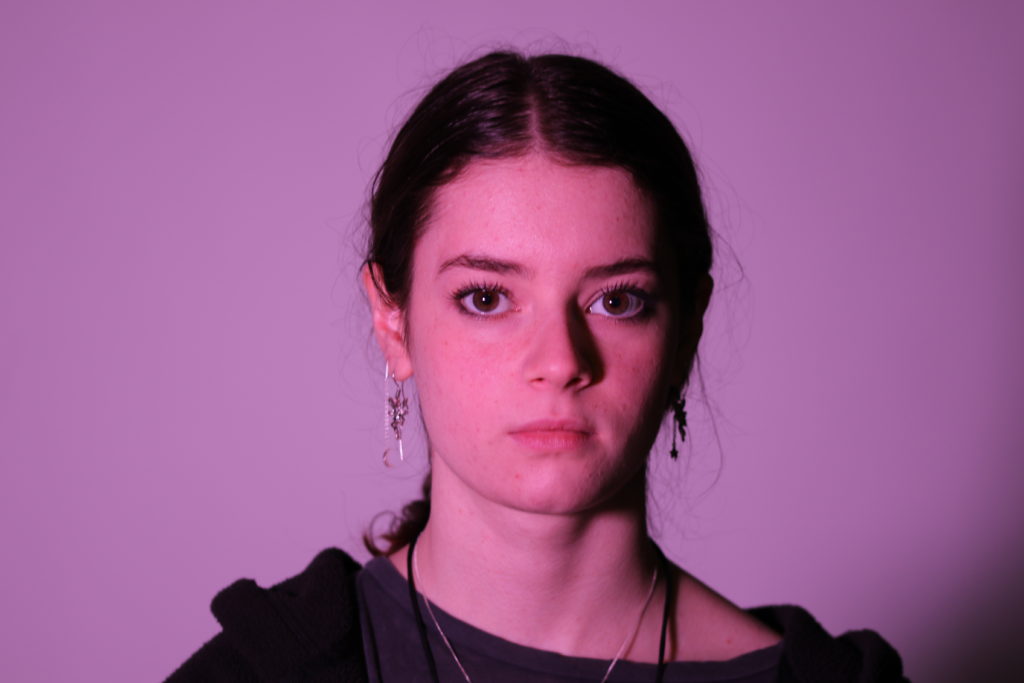
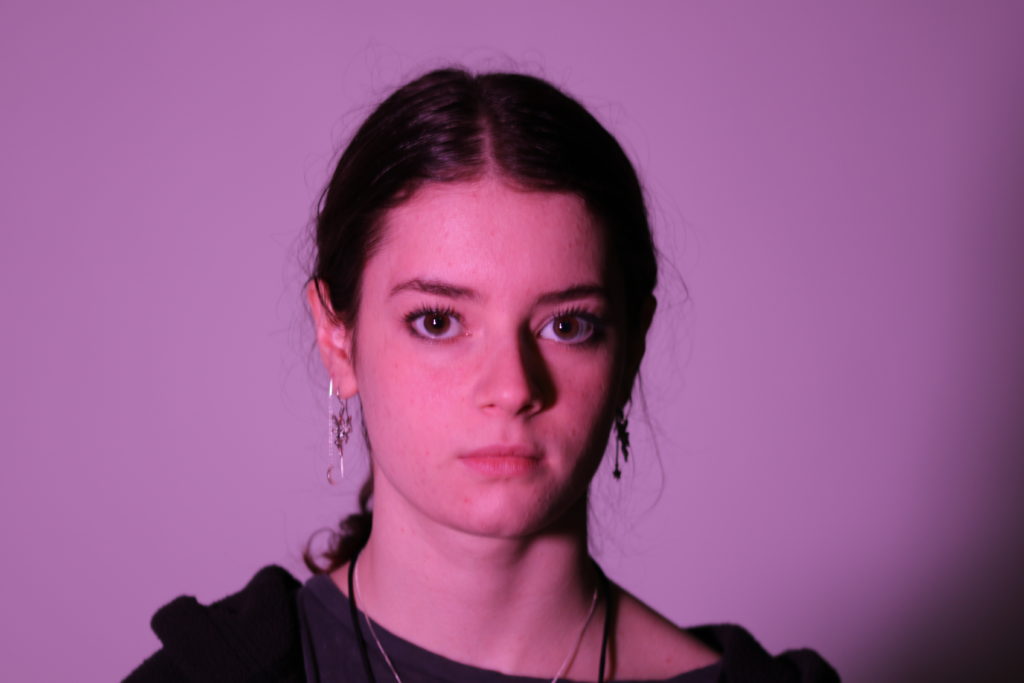
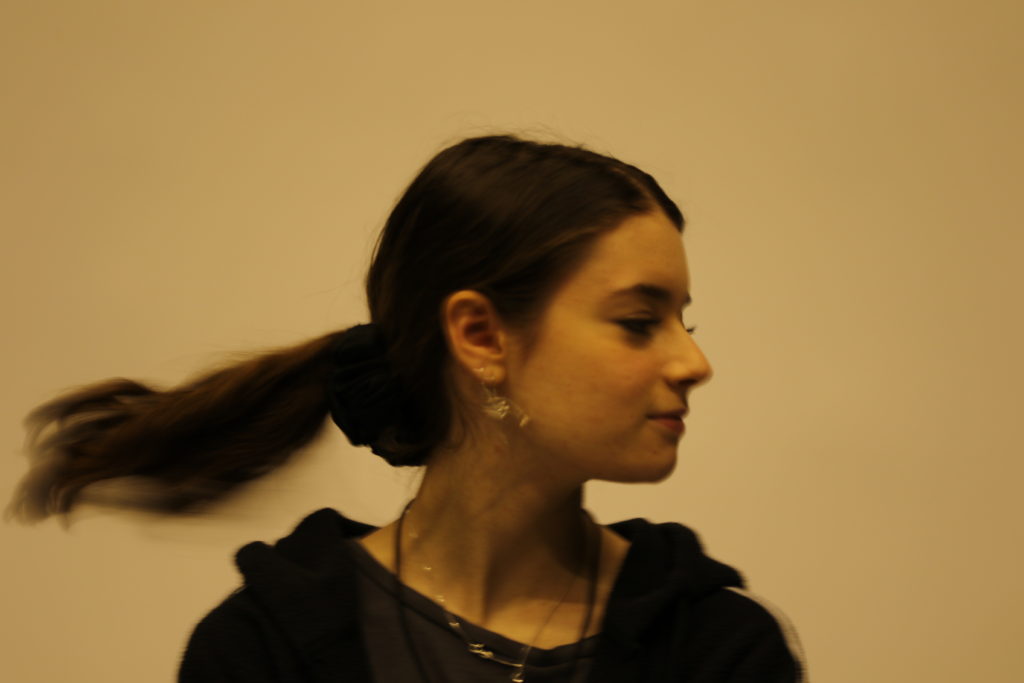
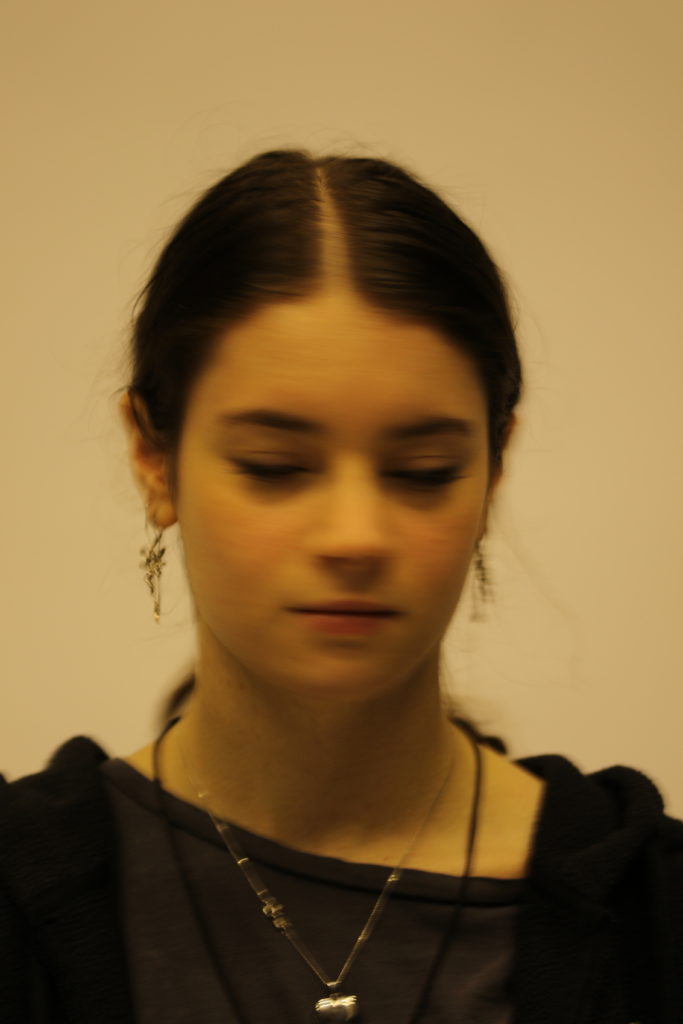
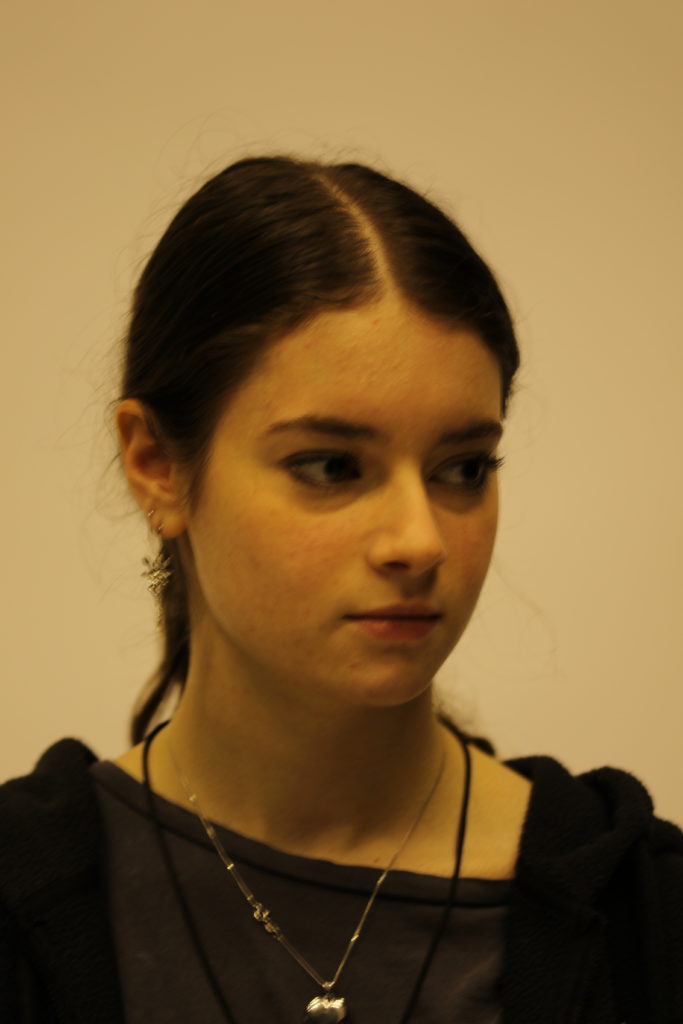

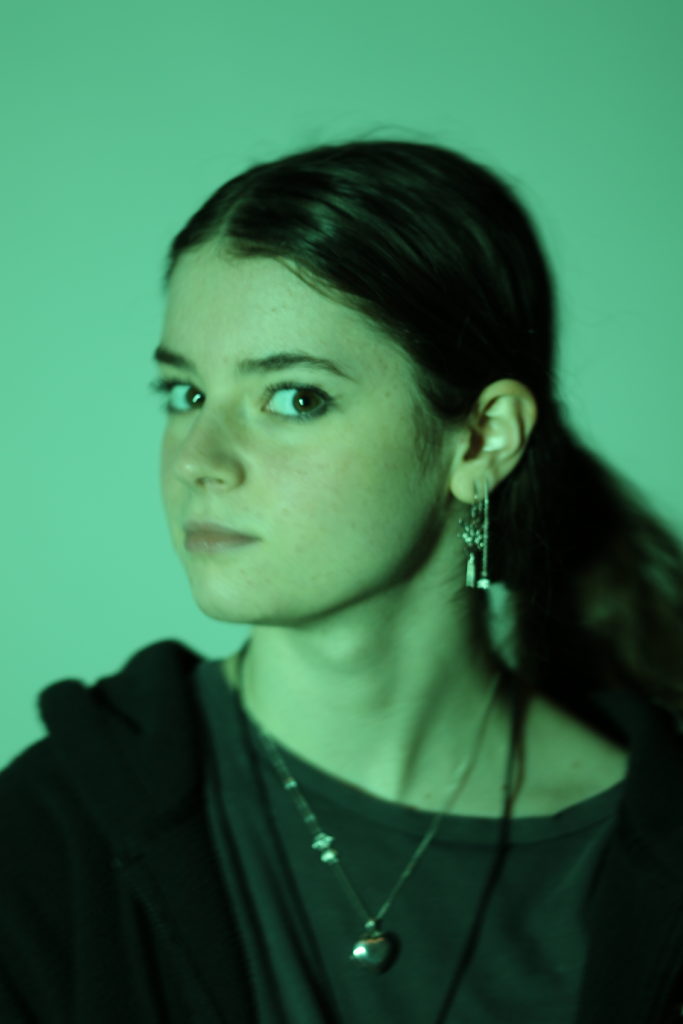
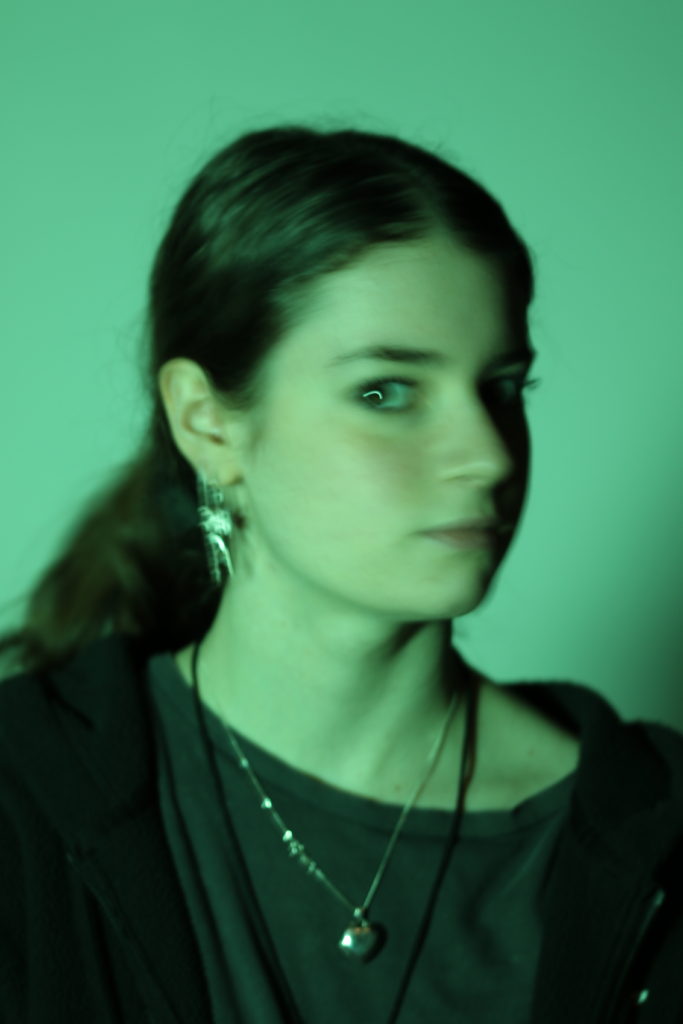
I set the shutter speed to be quite slow, causing any slight movement of the model to be picked up, creating blurred and obscured images.
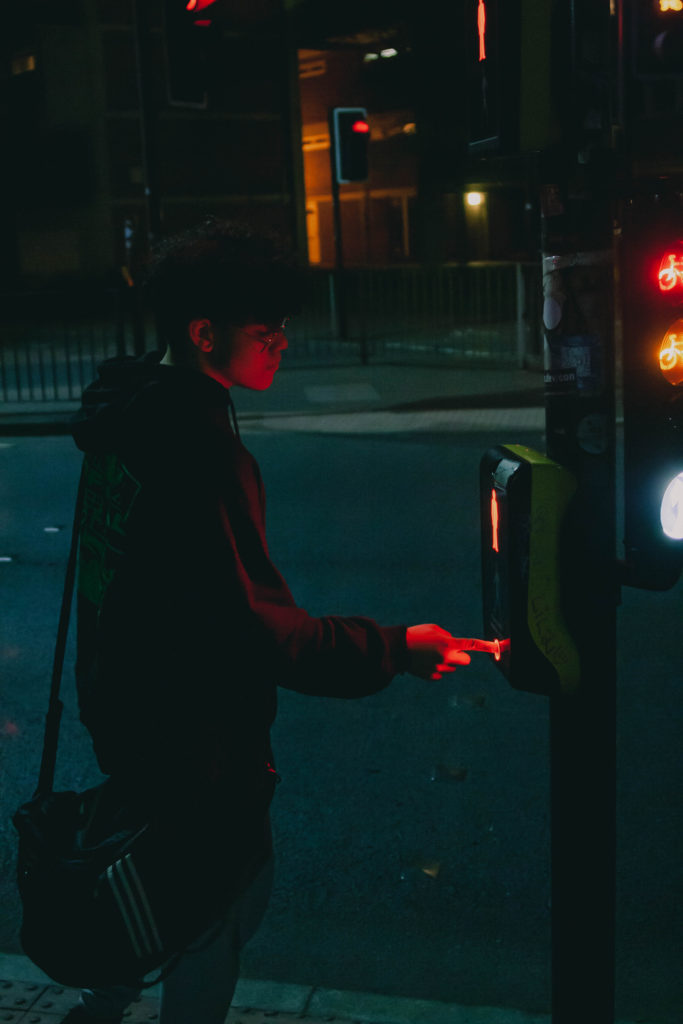
This first photograph I took of my friend Josh on Chapelfield Road, just outside Chapelfield Gardens, a local children’s park in the city. With this image, I wanted to really try and capture the modernist feel of a city, with the vibrant (traffic) lights mixed with the tone of the moonlight, to create a sort of cyberpunk atmosphere in the final image. As my camera settings weren’t the best, I adjusted the noise levels and raised the exposure slightly to increase visibility. I also increased the contrast and strength of the reds and oranges, which gave the final image a vintage, grainy aspect to the piece that I quite like. I also took interest in the concept of Josh being the only person in the photograph, as it was actually taken rather close to the city centre on a Friday night, which could inspire imagery surrounding isolation even in a bustling city full of people.
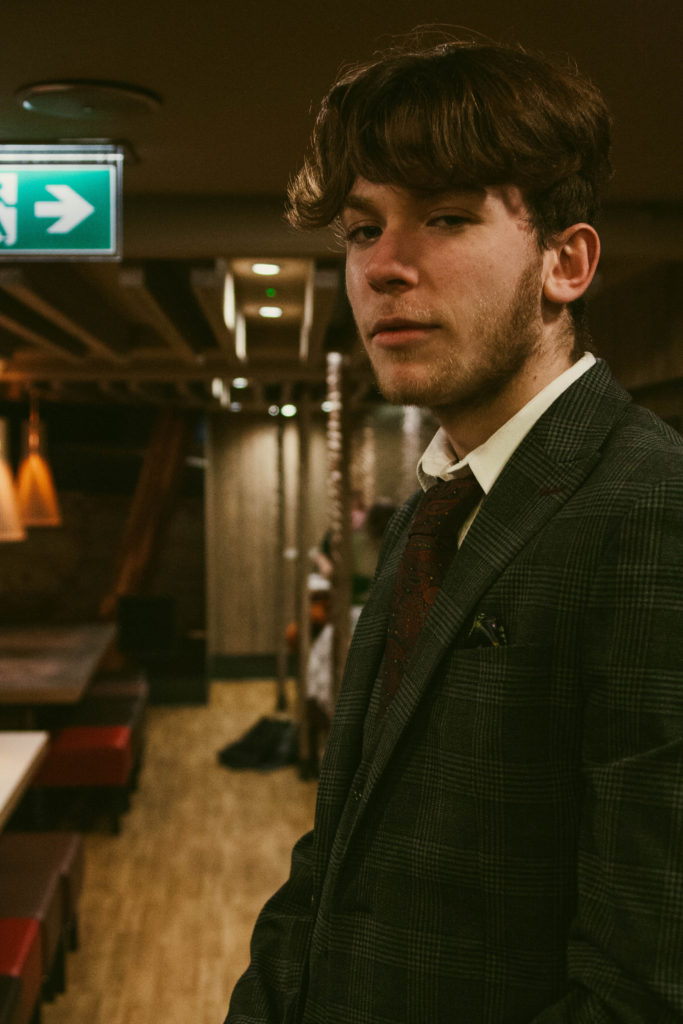
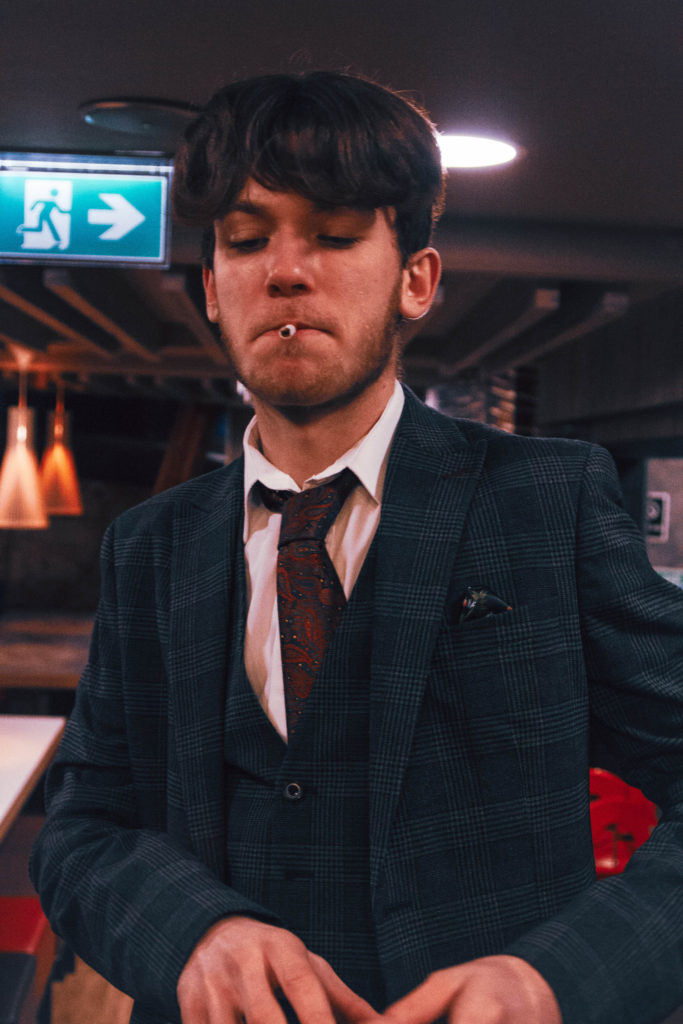
These two photos were taken of another friend of mine, Ben, a young farmer I’d met that night walking around the city after leaving a farmer’s association meeting. Taken inside a McDonald’s just outside the Junkyard market, he was eager to model for the photos and tried to find different props that would work, deciding on a cigarette as it fit the personality that his sharp, expensive suit emanated.
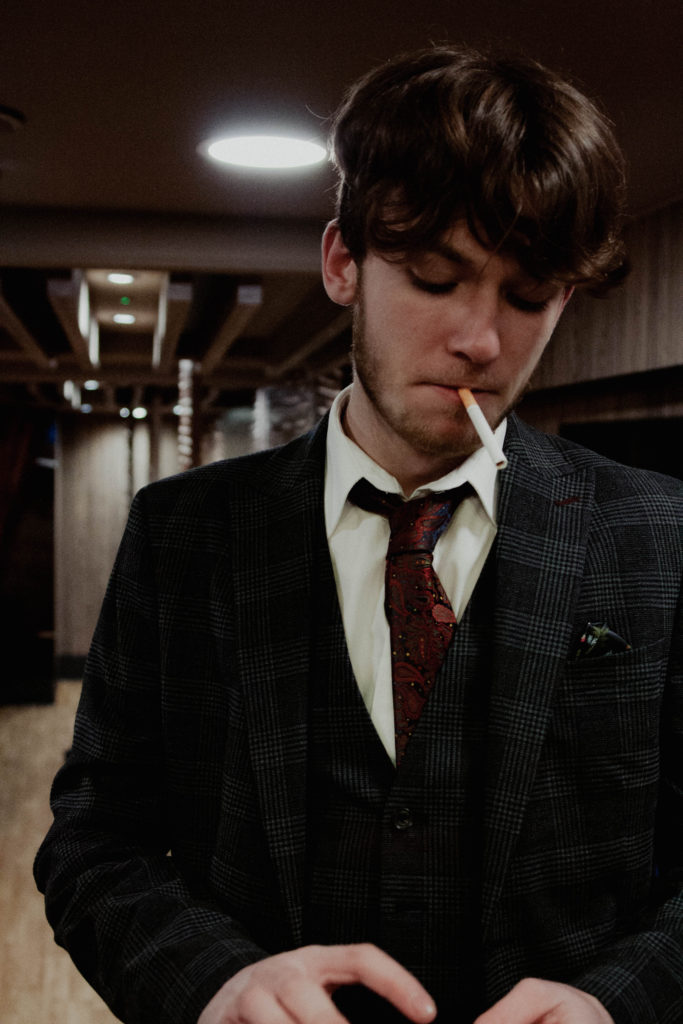
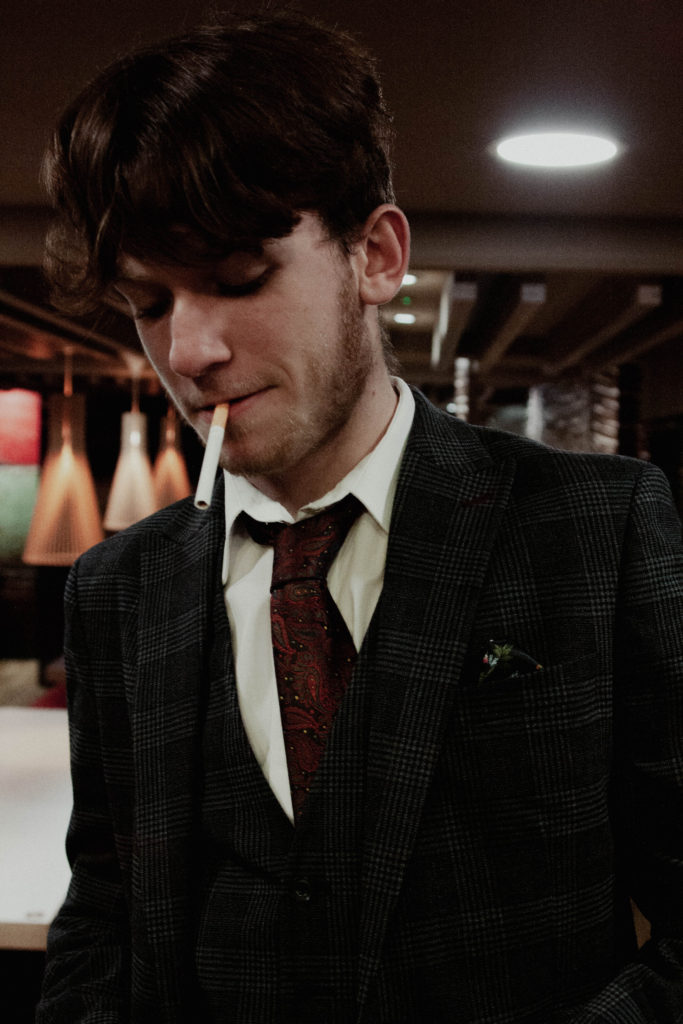
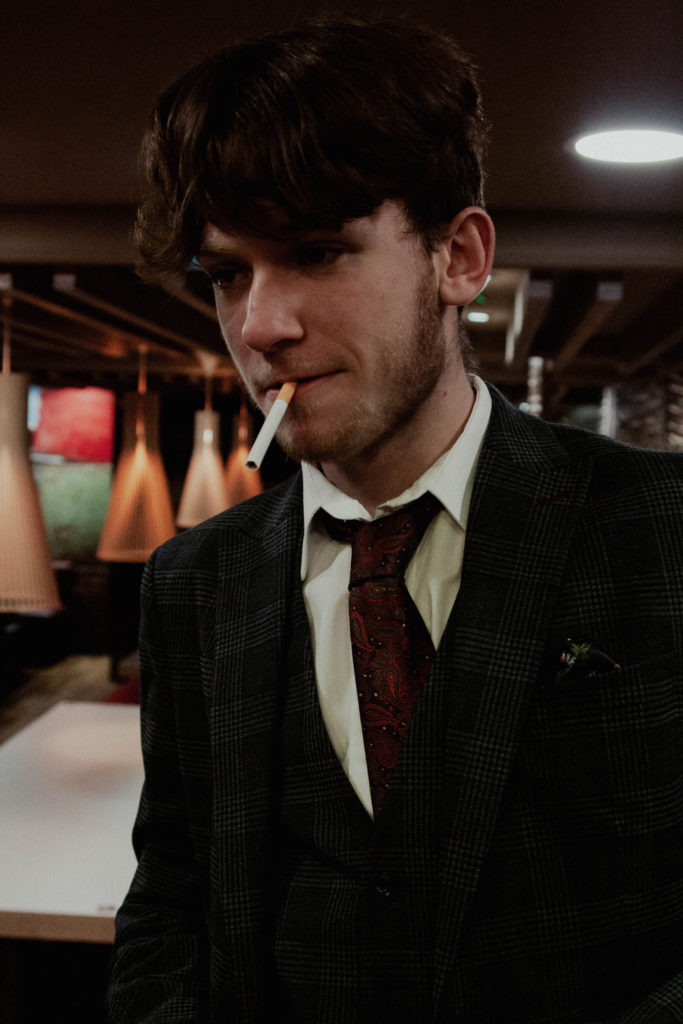
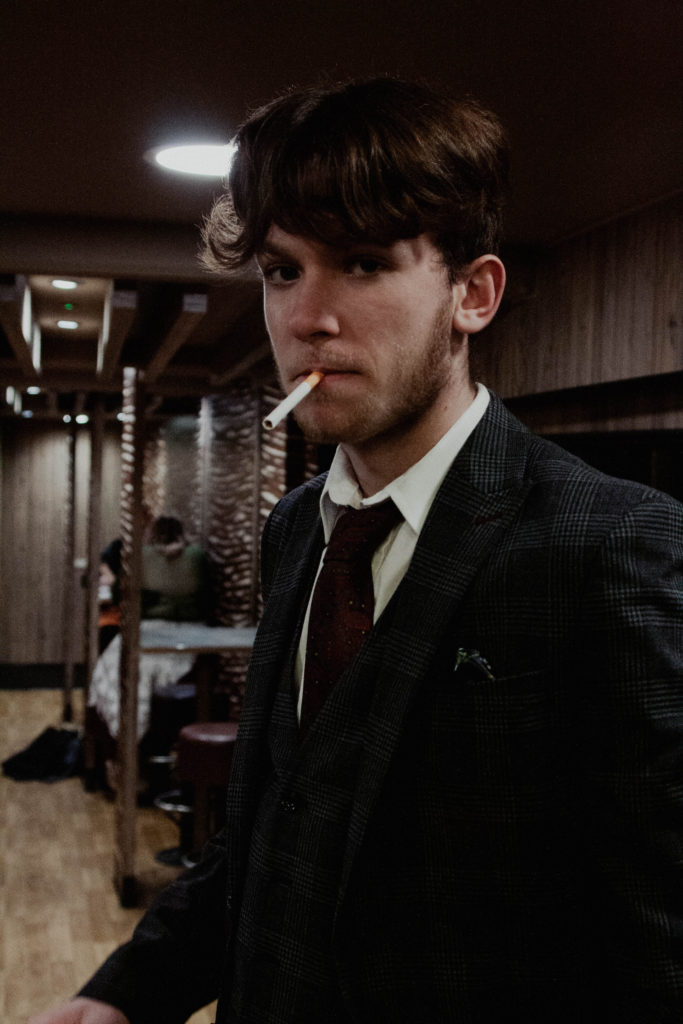
This set of images works well as a singular piece, taken in a sequence that follows Ben’s movements in the frame. I adjusted each element to be consistent throughout each photo, and I love the way it looks. It displays him in a similar light as the last two pieces, but the less saturated tones create some sort of indescribable feeling that I find to be very intriguing.
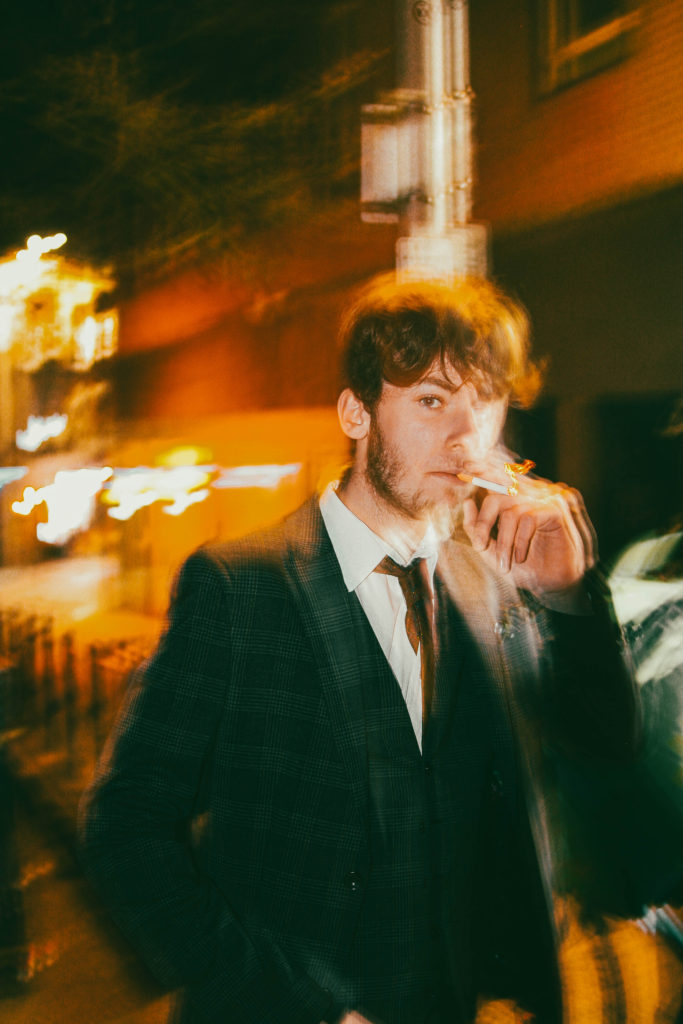
This next photograph of Ben was taken on a longer exposure by accident, but I liked the way it looked enough to develop it further in Lightroom and I think that it’s also a very unique and extraordinary piece that is almost disorientating for a viewer, providing a feeling of overstimulation with the garish, lurid tones that surround Ben.
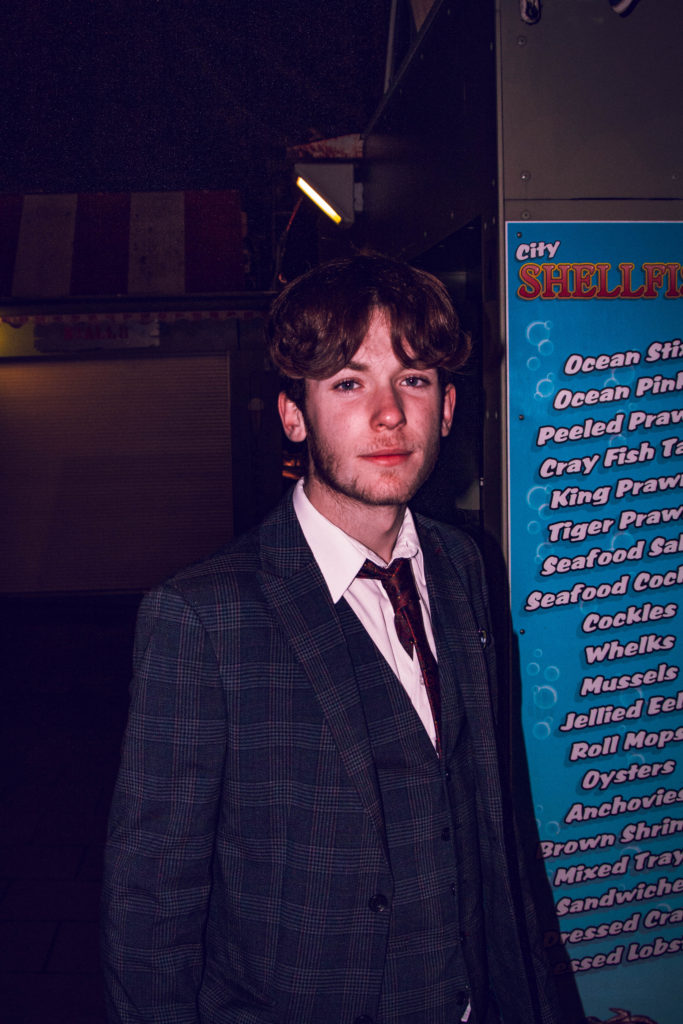
Finally, this last image of Ben was shot outside a shellfish stall in the market and is rather easy on the eyes given the primarily red and blue colour palette that blends into dark purples across most of the photograph. I believe that the sign on the front of the stall is a key focal point of the image, as the cyan tones heavily contrast the rest of the piece in brightness, breaking up what a viewer would see as they process it, which I think brings the composition together nicely.
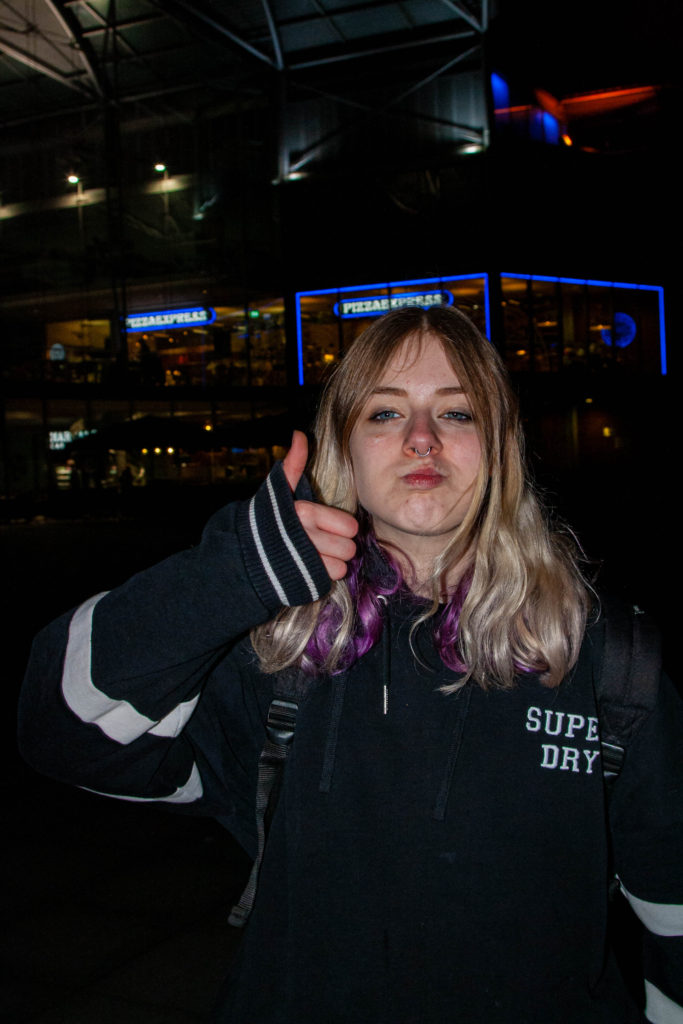
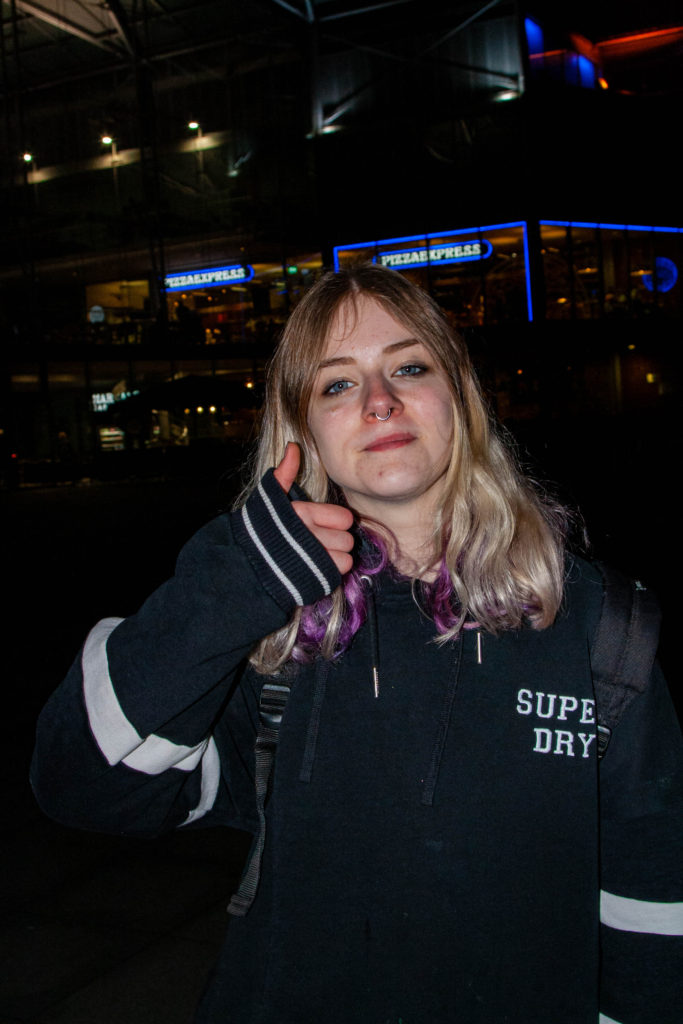
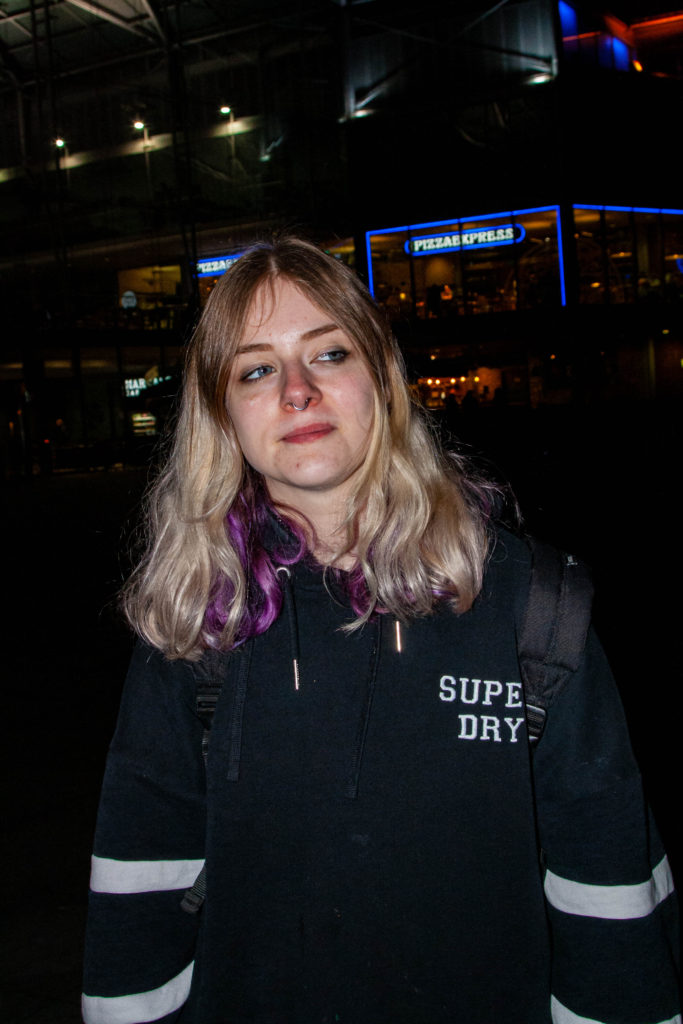
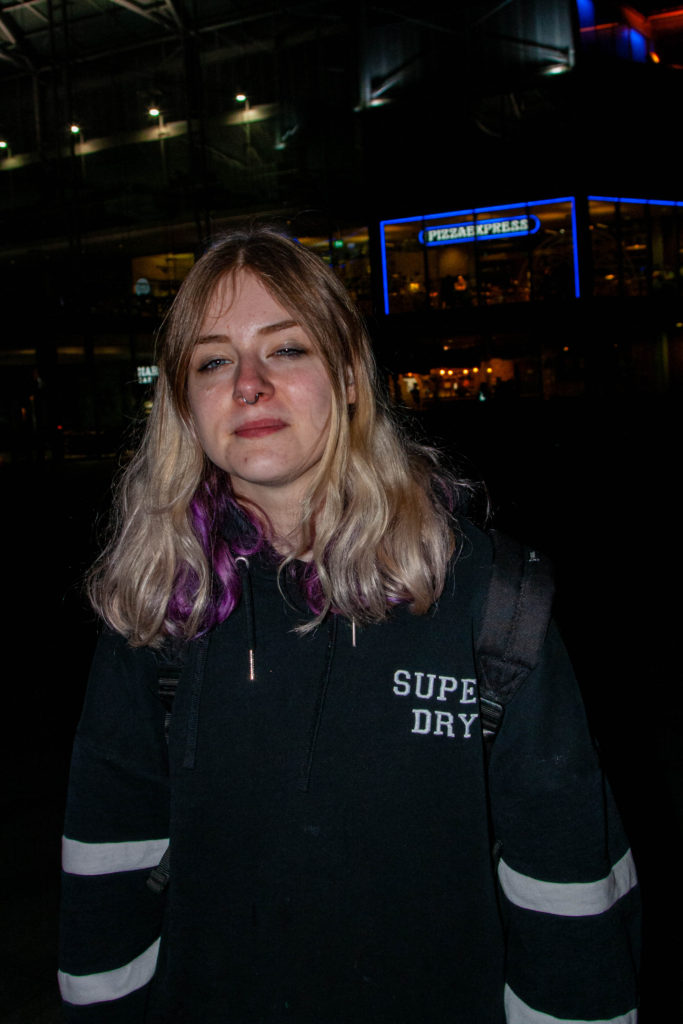
These photographs of yet another friend of mine, Emily, work well as a set of four, much like the images of Ben from earlier. Once I’d figured out how night portraiture settings worked on my camera, I found that each picture turned out in a similar style to the work of Bruce Gilden, thanks to the high quality and strong artificial lighting from the camera flash, which I decided to keep reusing for the rest of my night time photographs. I like how Emily’s body language captures her too, depicting her as the same kind, welcoming person that I’d met last year, which adds to the background of the city library, known as The Forum, behind her, as she studies at college in the city during the week. I didn’t stress too much about the editing for this set, as the pieces were good as-is.

Jayden and Jess, a couple I’d met on my last visit to Norwich were amazing at helping me find my way around the city and were happy to have their photos taken. I shot this picture as Jayden rolled a cigarette on some stairs opposite The Royal Theatre, and found that I’d gotten this absolutely fascinating image. While Jess is looking at her phone, Jay’s direct mode of address with the camera creates this strange ‘fourth wall break’ that is strengthened by Jess’s unawareness of the camera, isolating him from the scene and bringing the viewers’ full attention to him. I used another editing preset and modified it to the way I wanted it, to give off the illusion of a vintage photograph, like a lot of these images, to create a sense of nostalgia; as memories captured by teenagers on a night out.
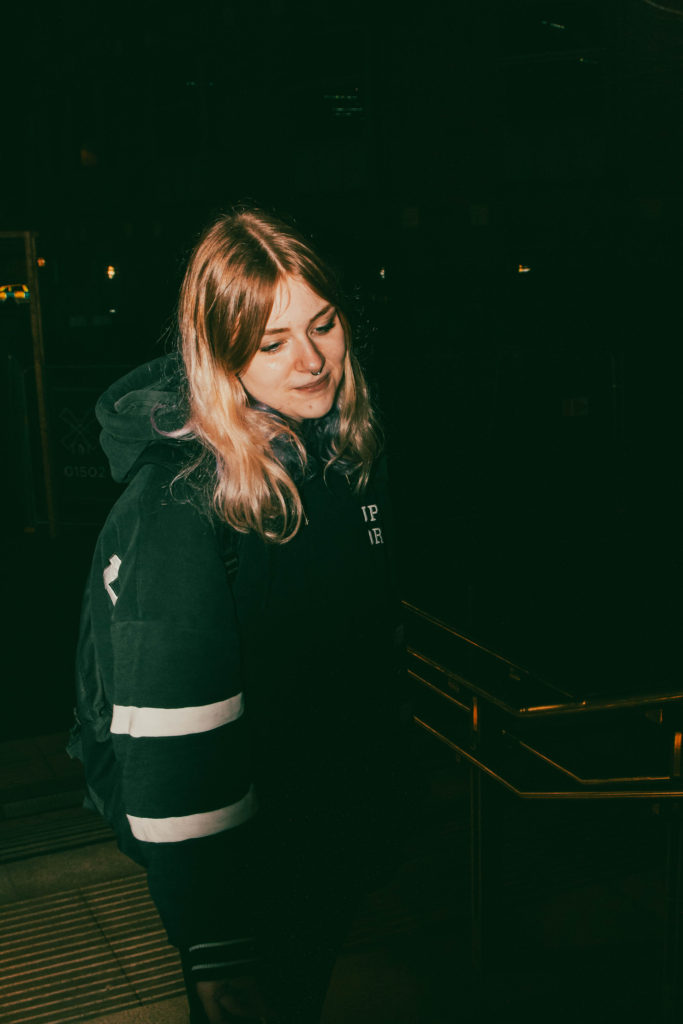
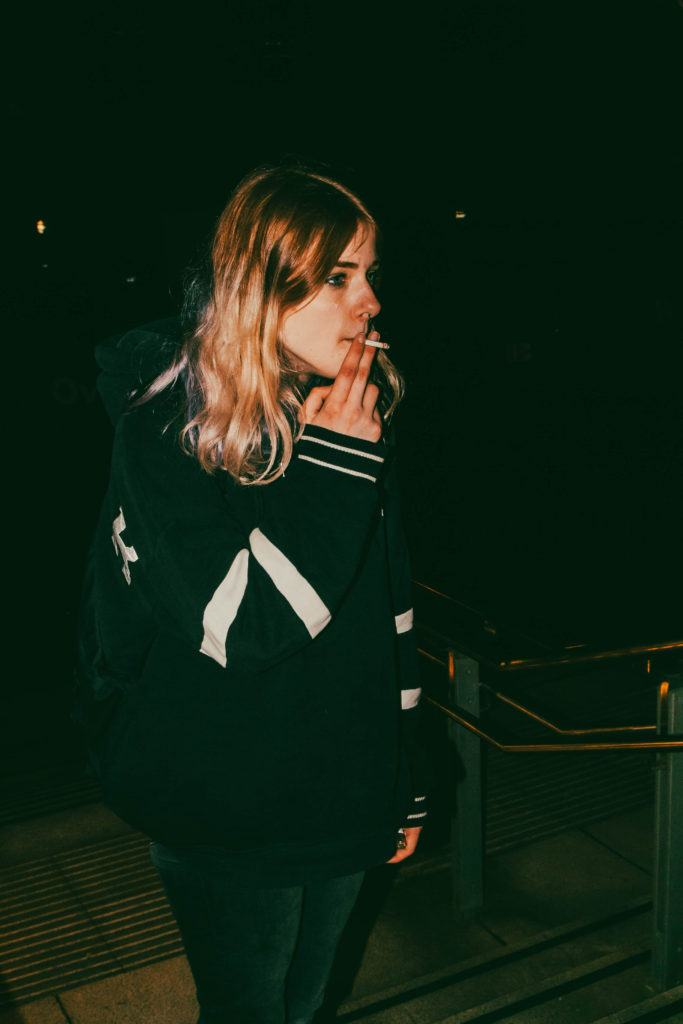
With these two photos, I didn’t really have a style in mind, but I thought that it could turn out to be quite a visually pleasing image. They work well as a diptych, displaying Emily’s movement as she takes a drag. Again, I went with a vintage aesthetic when editing this in Lightroom, and I think it suits the tones of the piece quite well.
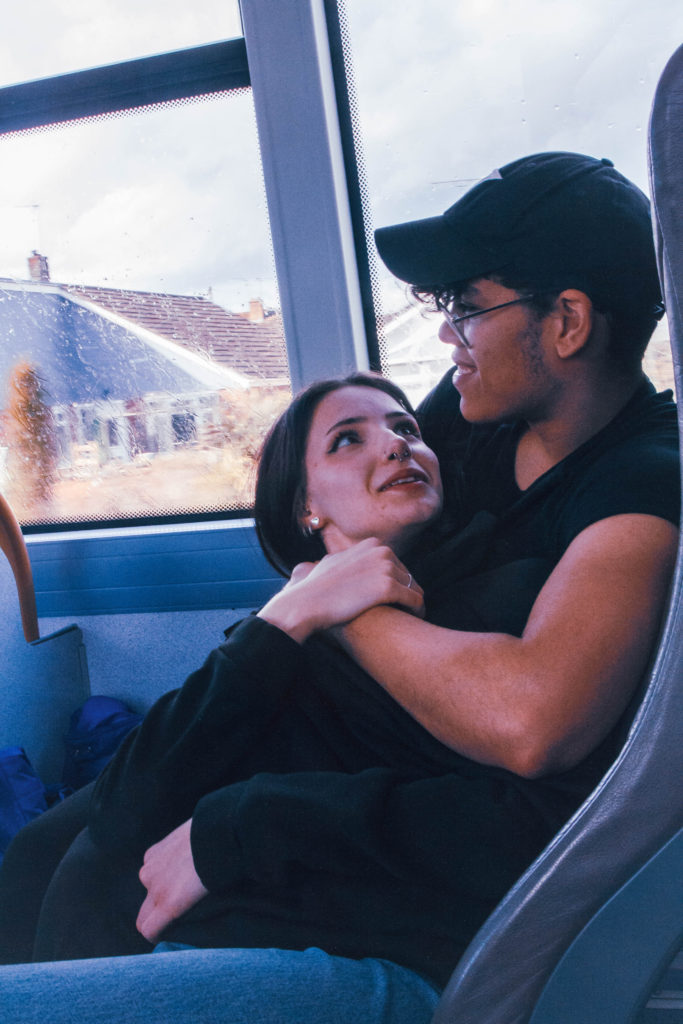
I shot this while testing my camera as we travelled to Great Yarmouth for a day out to Pleasure Beach, which was cut short by a bout of rain and early closing times due to a bank holiday. It features Josh with his girlfriend, Summer, another close friend of mine. I decided to bring out more of the blue hues within the image in Lightroom, as it was the most prevalent colour in the composition. Originally, I wasn’t planning to use this, but I do think it captures a lot of emotion that I hadn’t yet gotten on this trip.
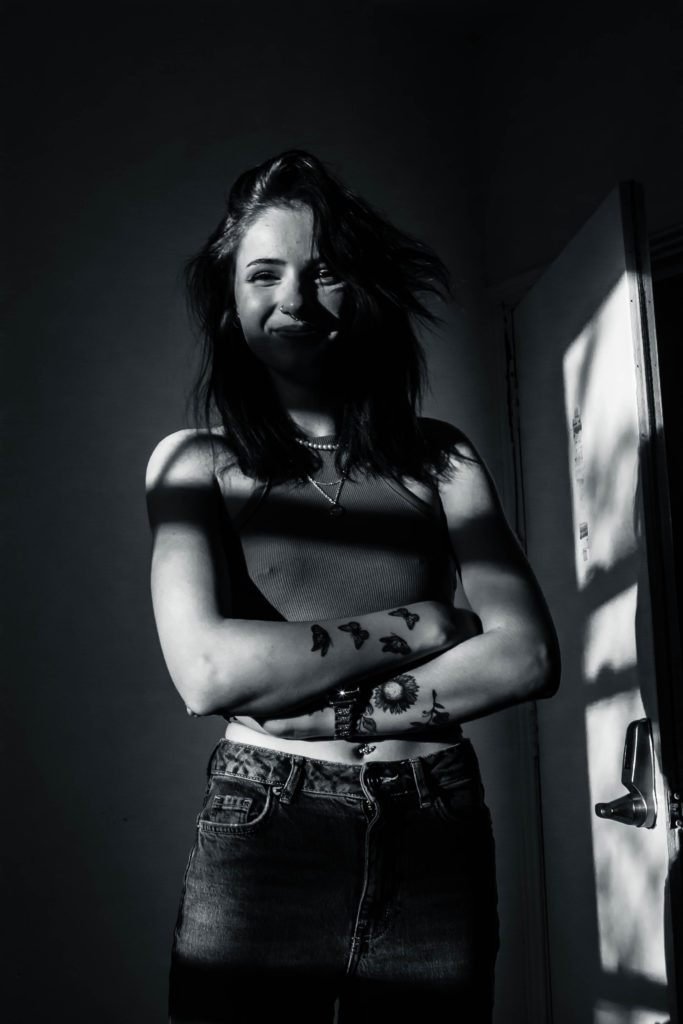
After we came back from Yarmouth, the three of us took shelter in my guest house waiting for the rain to stop. I thought it would be a good time to shoot some photographs of my friends and I loved this image of Summer. I used a monochromatic filter and intensified the red hues to increase the atmosphere and darken some of the tones. It’s quite an artistic piece and I could easily see this being displayed in a gallery.

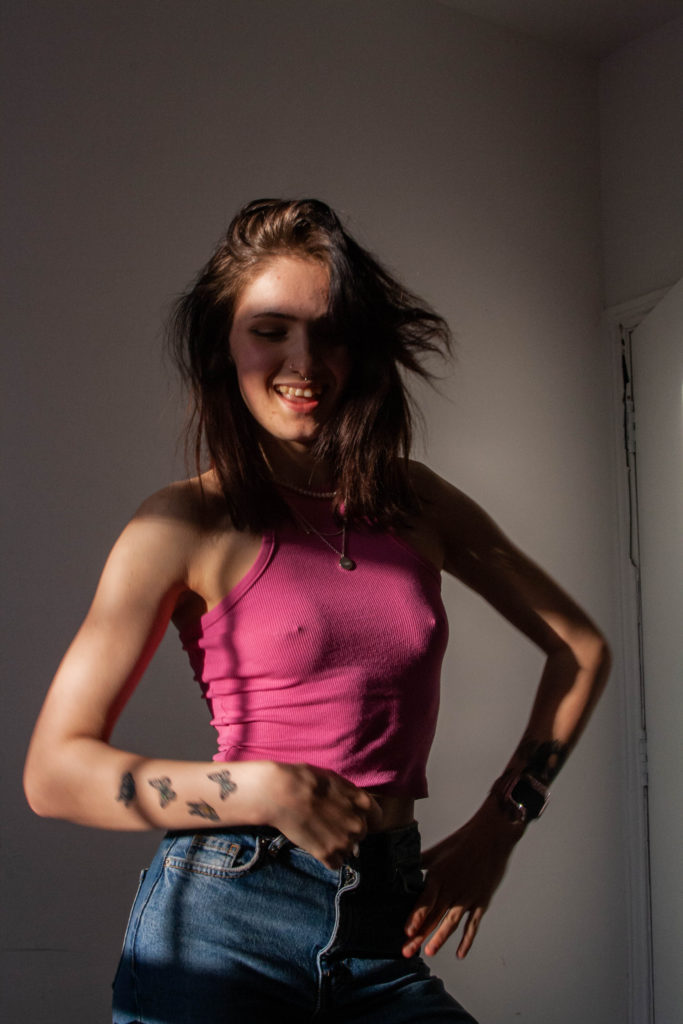
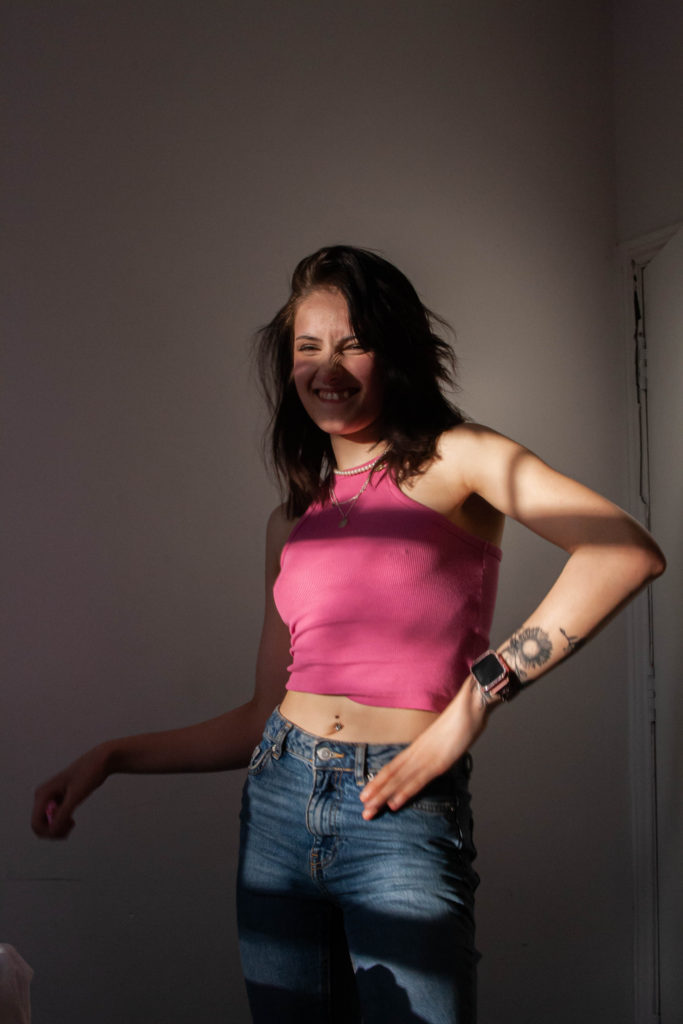
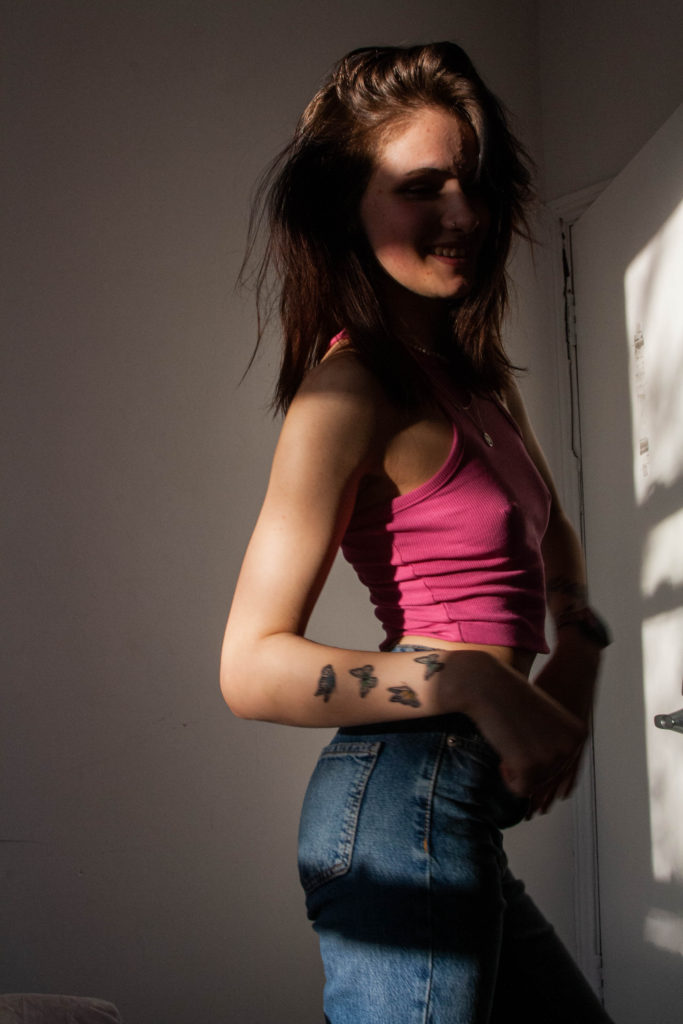
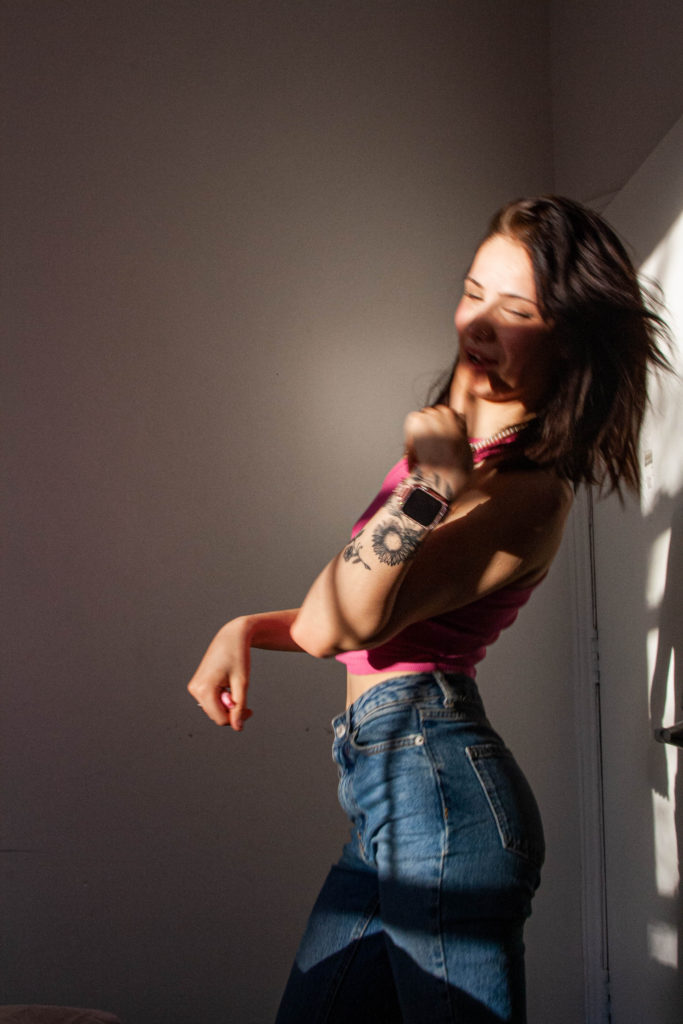
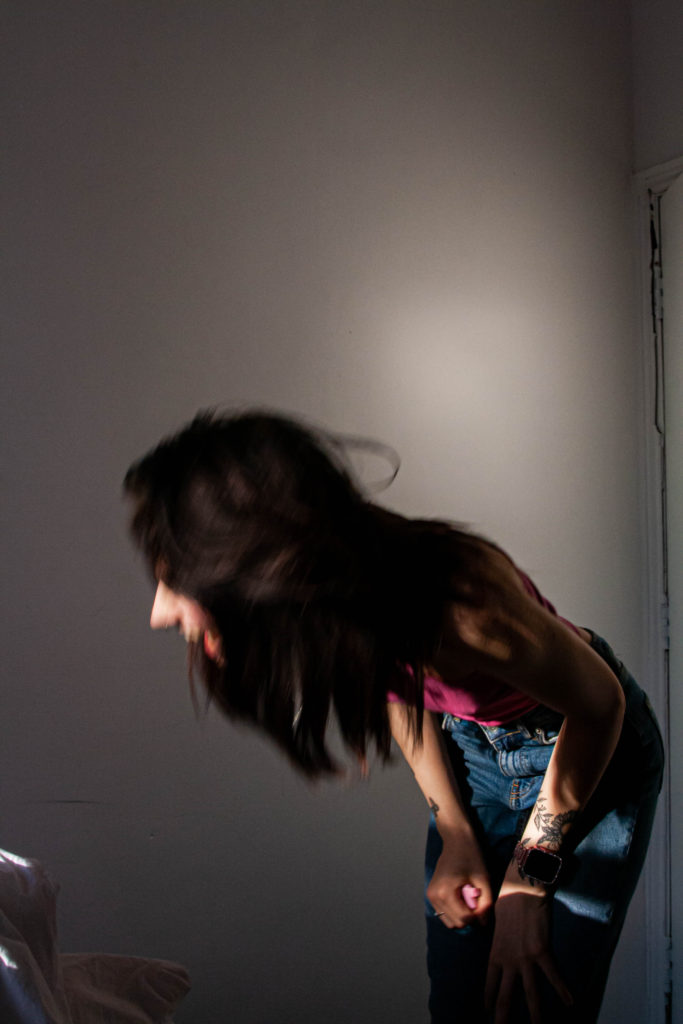
This set of images works perfectly together as a single composition, showcasing Summer’s movements as she posed in front of the camera – and I think that the motion blur in some of the shots accentuates this. I really love the soft lighting in the background, as it builds a strong contrast to the harder lighting on her body. The tones – the hot pink in particular – are also very visually appealing and bring a viewer’s attention solely to Summer.
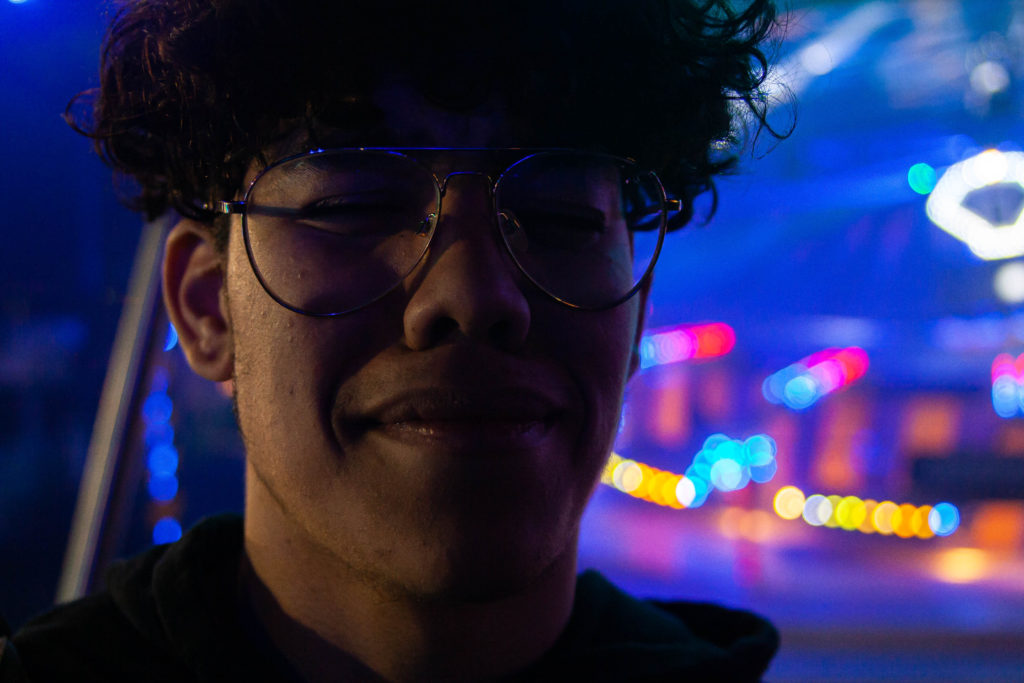
This was a photograph I’d taken toward the beginning of my trip. I’d met Josh to go and visit the fairground and thought it would be a good chance to take some images. I was infatuated with the way the bright lights reflected on his face and across the rims of his glasses, and the sharp focus really brought this out.
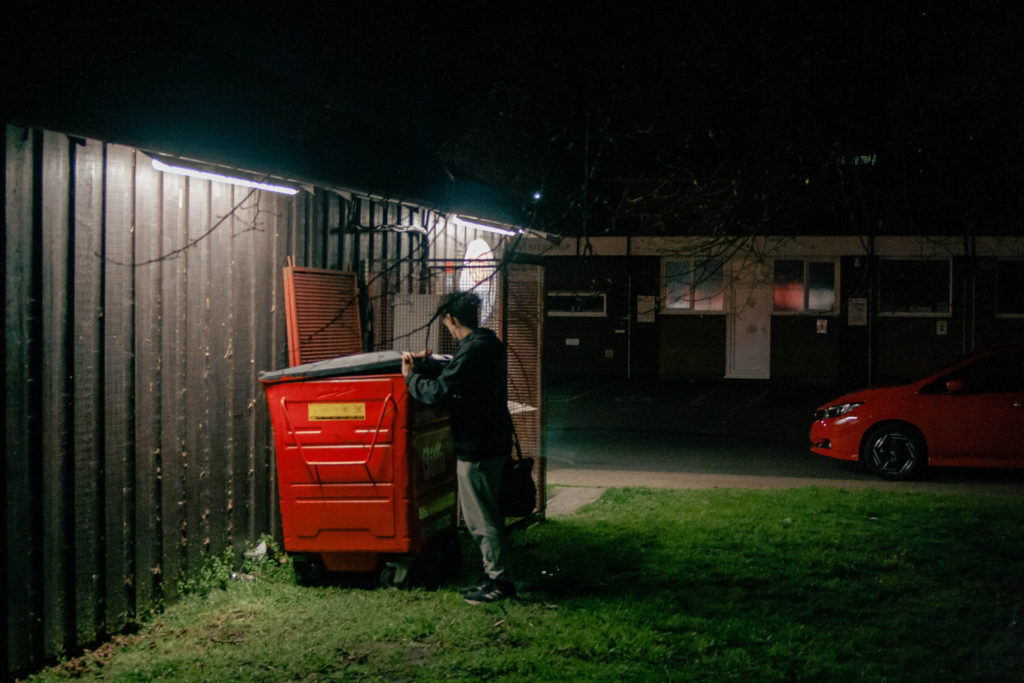
Later on that evening, Josh thought that the scene of the bright red bin amongst the lights would be a great photograph, before walking over to it and opening it while I was taking the photos. Out of the eight or so images I took, I’d say this was the best one, so after editing it, I have to say Josh was definitely right. The subtle blue hues from the lights and the gaudy red bin bring the composition together, combined with the shadowy background gives it an air of mystery that I couldn’t stop looking at.

On one of our nights out, we went to that same McDonald’s again and I was already pleased with the photos I’d taken in there previously, so I took a few of Emily drinking a coke from a disposable cup. This photography came out with a nice, shallow depth of field with a very sharp focus on her – The tones also follow a very orange/yellow palette, with a few exceptions being her hoodie, the wall behind her, and some streaks in her hair.

After we left the McDonald’s, Ben thought a photo of all of the lights from the Junkyard Market looked similar to a retro arcade, so I pulled out my camera and shot a few images of him. Jess also jumped in behind him for a few of them and I thought the additional subject added to the scene, as it was near pitch-black where she was stood anyway. During editing, I brought out the blue hues a bit more and increased the exposure, and was left with this.
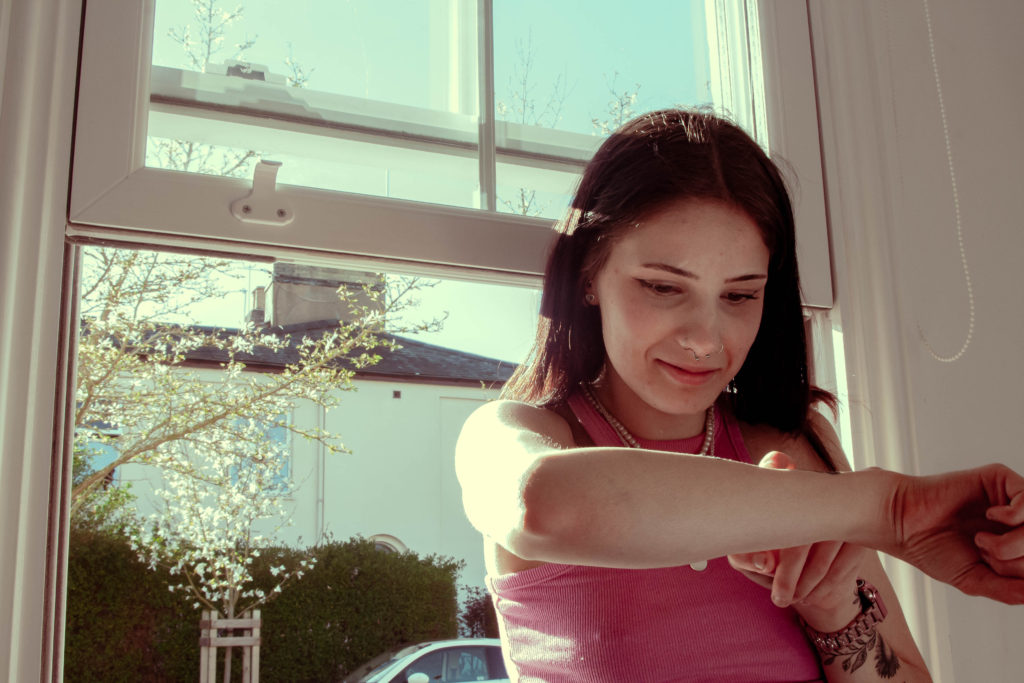
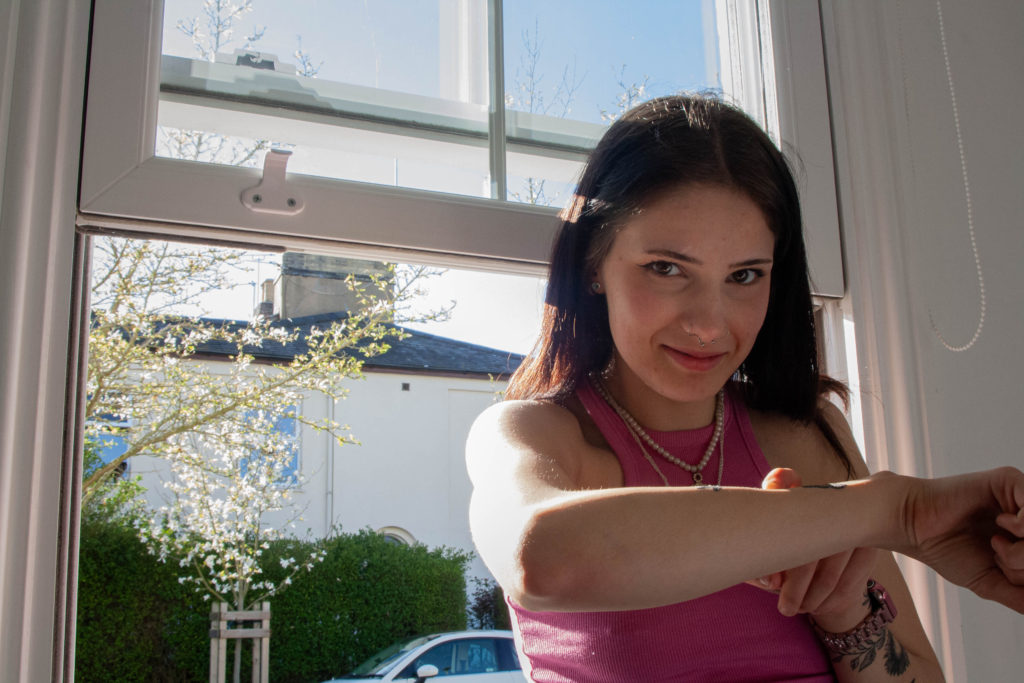
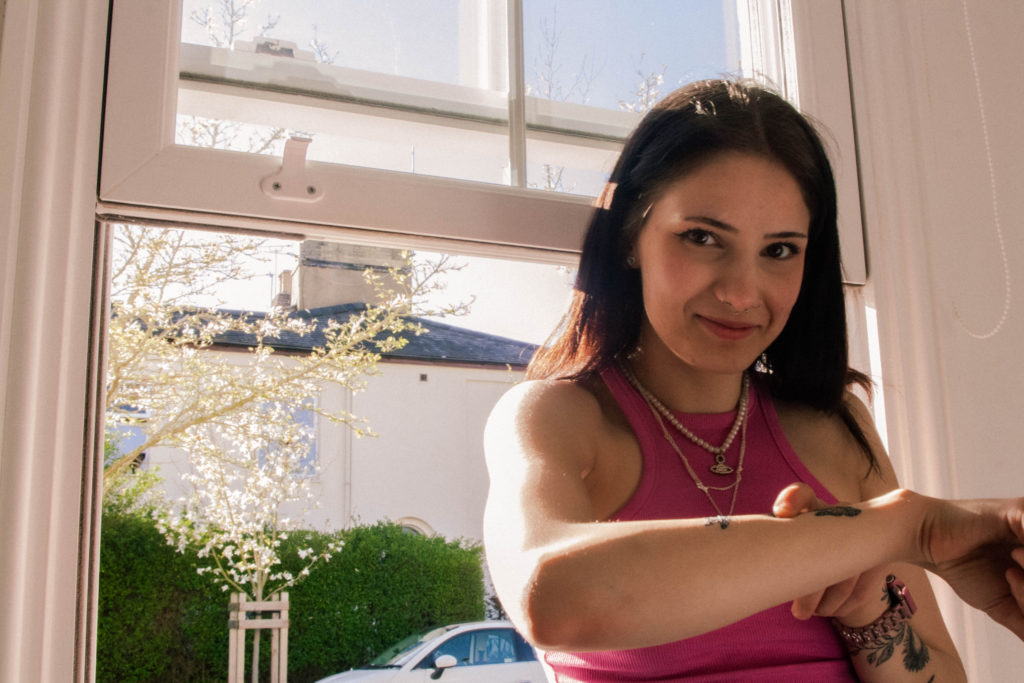

Back when we were taking shelter in my guest house from the weather, I also shot these photographs of Summer as the weather cleared up. I thought these would be a pretty good set of four, as they have almost identical compositions, excluding the tones, which were edited later in Lightroom. For the three images that are in colour, I tried to portray an atmosphere of Spring, which looks quite successful to me, mainly due to the green hedges and blue skies.
In my opinion, this trip was an opportunity to develop my photography skills in another environment, which also made it easier to ask people if they could model for me, as I wouldn’t see them for a long time anyway, or maybe even ever again. I’m proud of the work I produced in Norwich and can’t wait to take more photographs in new places when I travel next.

Over the Easter term break, I spent a week with my friends in Norwich, visiting the fair in the city and exploring the area. While doing this, I also brought my camera with me to take some portrait images for my school project.

As I didn’t have access to any artificial light, other than the camera flash, I spent a lot of time experimenting with different camera settings in order to take good images in low lighting.

I took images throughout various locations in the city, some behind corner shops, in the city centre, and even in Mcdonald’s, just to see what did and didn’t work.
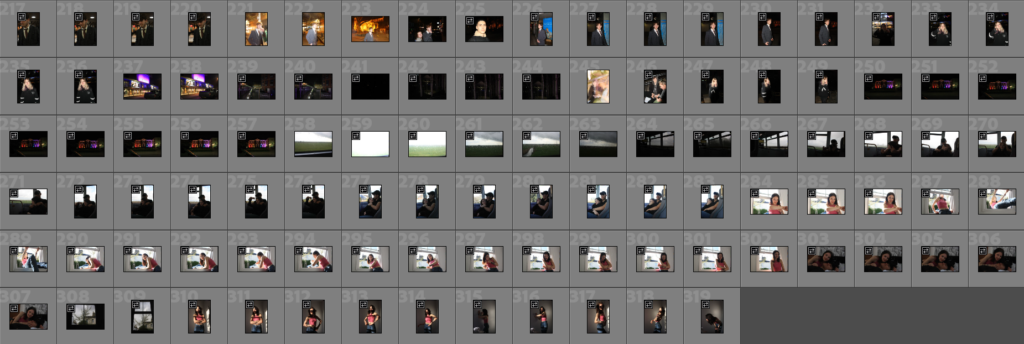
My favourite images ended up being the shots taken in natural lighting from the window of my hotel room, which developed contrasts in lighting and against my subjects’ clothing and features.
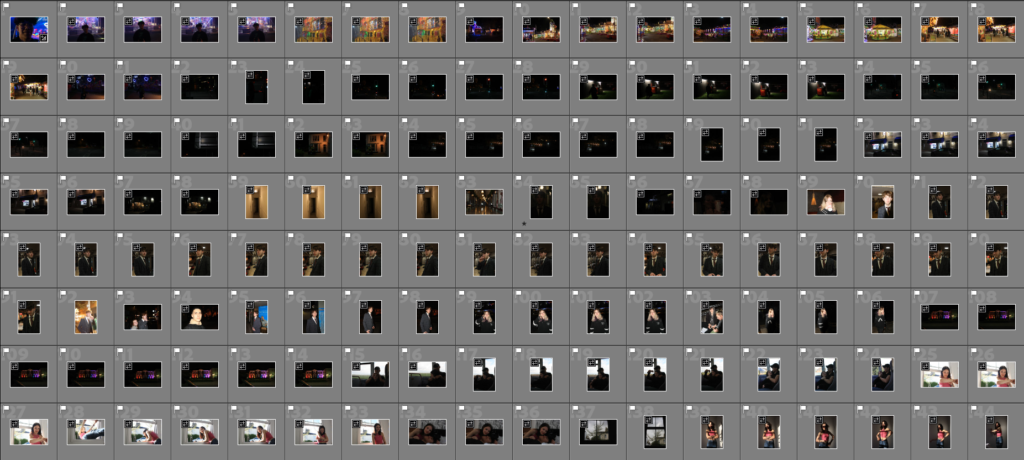

I gave each image a star and colour rating on Lightroom Classic, based on the quality and how good I thought they’d turn out after editing.
































These are all of the images that I edited from the shoots. I experimented with different styles for editing, using the editing presets available in Lightroom and adjusting specific details from there to create unique compositions.

Femininity – Qualities and attributes typically associated with women and girls
Masculinity – Qualities and attributes typically associated with men and boys
Most people tend to associate their identity or parts of their identities with different masculine and feminine attributes, which defines how they dress, behave, and treat others. A lot of these factors are affected by a person’s environment and upbringing, such as the way others treat them and others, and what the person needs to do to work and live. This can apply to various areas of someone’s identity and personality, be it their political views, personal views, and can explain how they act toward people of other cultures, races, and status.
The key themes often explored when it comes to identity can follow culture, religion, geographical location, politics, social identity, prejudices, stereotypes, and even a loss of identity. As a whole, most of these factors rely on the concept of conformity, and wanting to belong with a group of people, which often becomes part of someone’s identity and becomes harder to change as they get older, as it can sometimes become their way of life.
Link to Film: https: THE THREE CANNONS
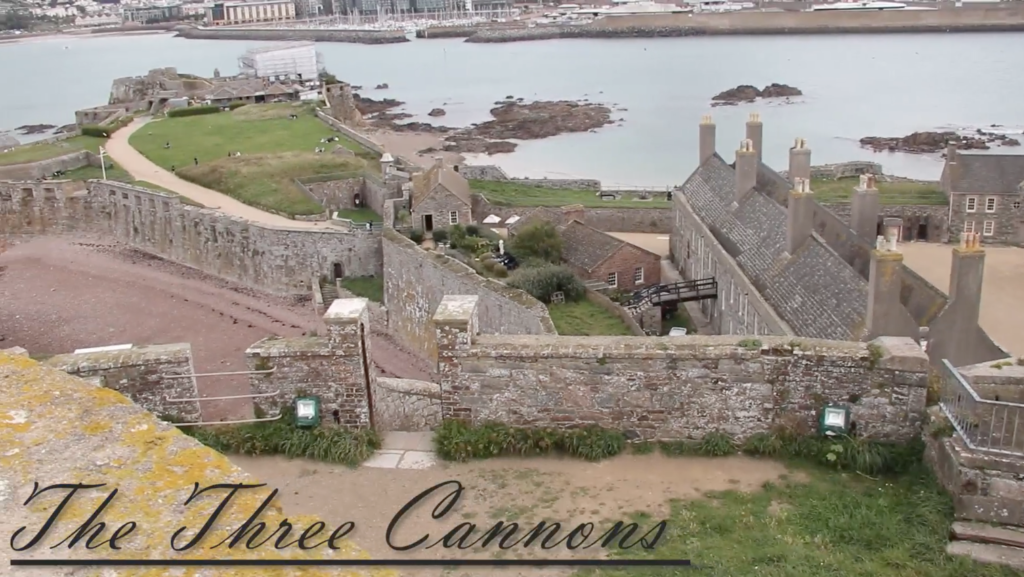

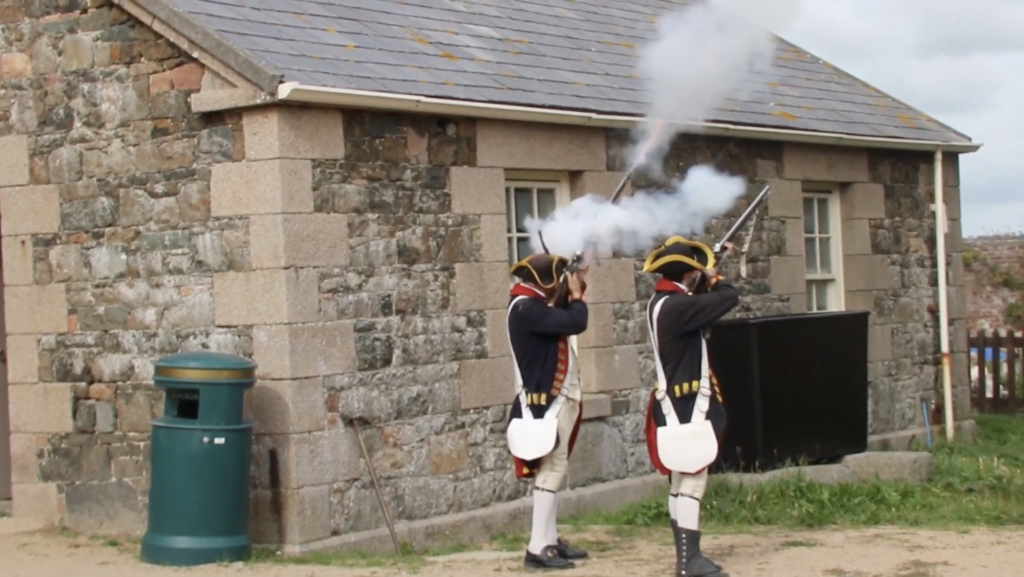

We simply wanted our script for the film to be a series of voice overs that come from the perspective of a master gunner of the castle. He would talk about his everyday life, and express little anecdotes of things that happened while he was at the castle. It makes our film more of a documentary but using stories of the past that are filmed/recorded to add a bit more ‘life’ to the final outcome.
I am Master Gunner Jonathan Shipley, and I am garrisoned out at his majesty’s fortress, Elizabeth Castle.
Not much really happened out at the castle really, well not when I was out there. I moved to the garrison in 1785, so the French invasion four years earlier didn’t really affect me. I didn’t know anyone. I was training in England as a redcoat and then they saw that I could read and write, so they decided to give me a blue coat, double my pay and name me a gunner. But my favourite part is that everyone had to call me sergeant even though the only difference was that I had a new coat and hat.
I guess the typical day for me was wake up and get dressed, report to the parade ground for drill and then they send me to the Grand Battery, and I joined the crew for number 1 gun. I started off as just a vents man, holding my finger over the vent when it was being swabbed, then as the week progressed my role changed so that I knew every job that needed doing before we fired the gun. Doing the worming, the swabbing, the ramming, the priming and only once I had done all that, I was given a linstock.
Oh, what you saw there was me having to use my bayonet ‘cause I lost the linstock. I got 30 lashings for that, spent three days in bad with bandages on my back. I remember the sergeant got the cat ‘o’ nine tails out the bag and after about 10 lashings, the surgeon would come along with his bucket of sea water and throw it on my back, try and stop infection. I think I would’ve preferred the infection to be honest.
I know what you’re thinking, why has he got a musket. Yes, I mainly use the cannons but every man in the British Army got a musket for guard duty. I’d only carry nine rounds because that’s all that it was used for. If I see a sail on the horizon and I can’t tell if its English or otherwise, I would fire the musket into the air and the sound would warn everyone on the castle that there’s a ship – then everyone would get to their cannons, load and wait for orders. There was this one time, I had been moved to gun number 5 cause they had no one to aim the gun, and three or four ships sailed into the bay, and on the second or third volley, number 1 gun blew up killing 4 men and injuring about 8 others, I was a good 20 feet away and I still can’t hear anything out my left ear. I was on leave and just walked around the castle at low tide and the end of the barrel was just sticking out the sand.
I left the castle in 1805 and shipped off to Europe to fight against Napoleon. Returned in 1812 after I was blinded in one eye, I couldn’t easily move around at the speed I needed to on campaign, but the army kept me on and sent me back to the castle as an invalid to train the new recruits. I’m now the Master Gunner of the garrison – making sure everyone is safe, there’s enough food, the powders dry – all of that. I love my job. I’m one of the lucky ones that made it passed 25 and I will be here till the day I die.